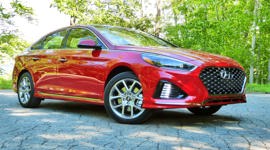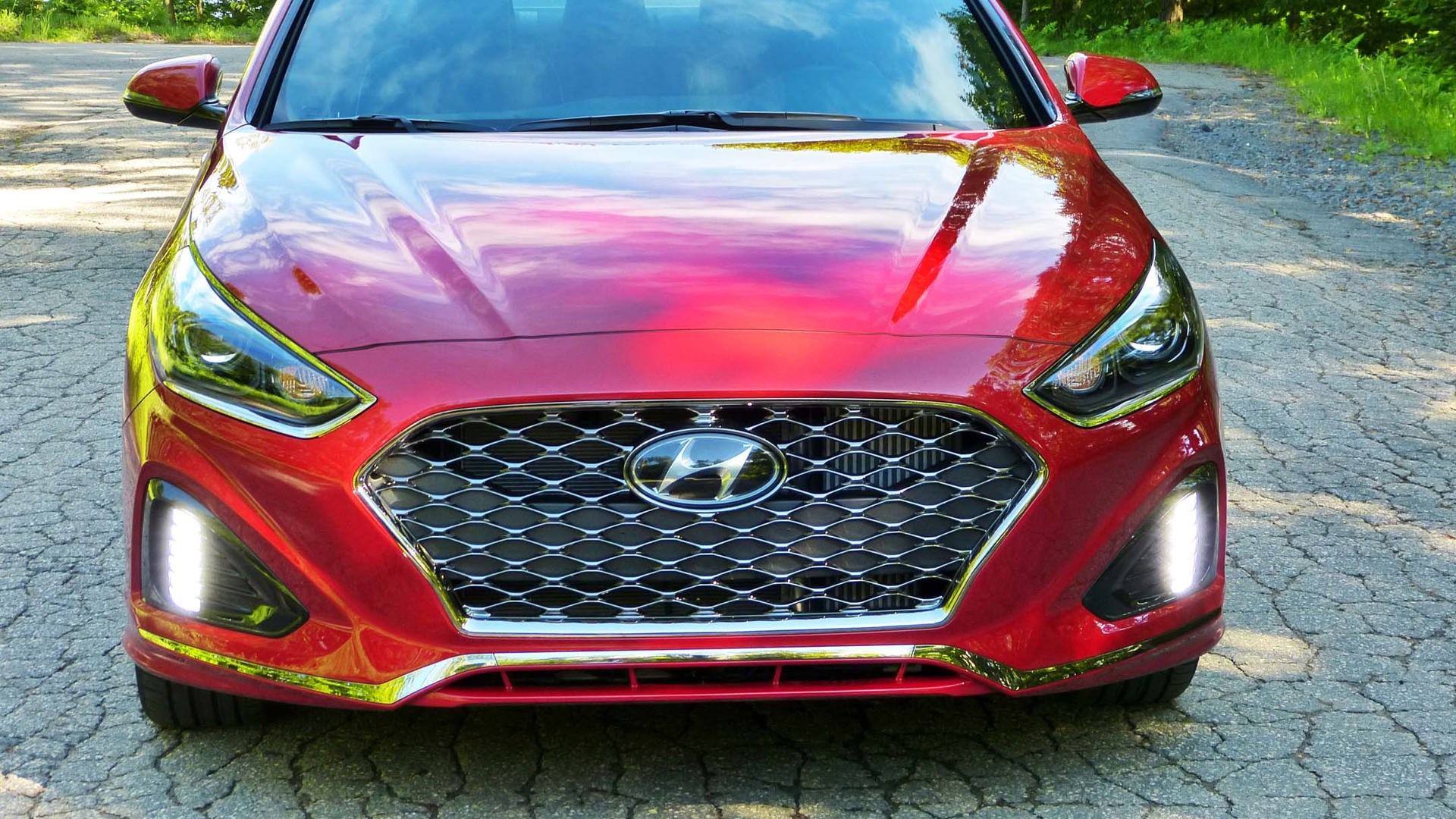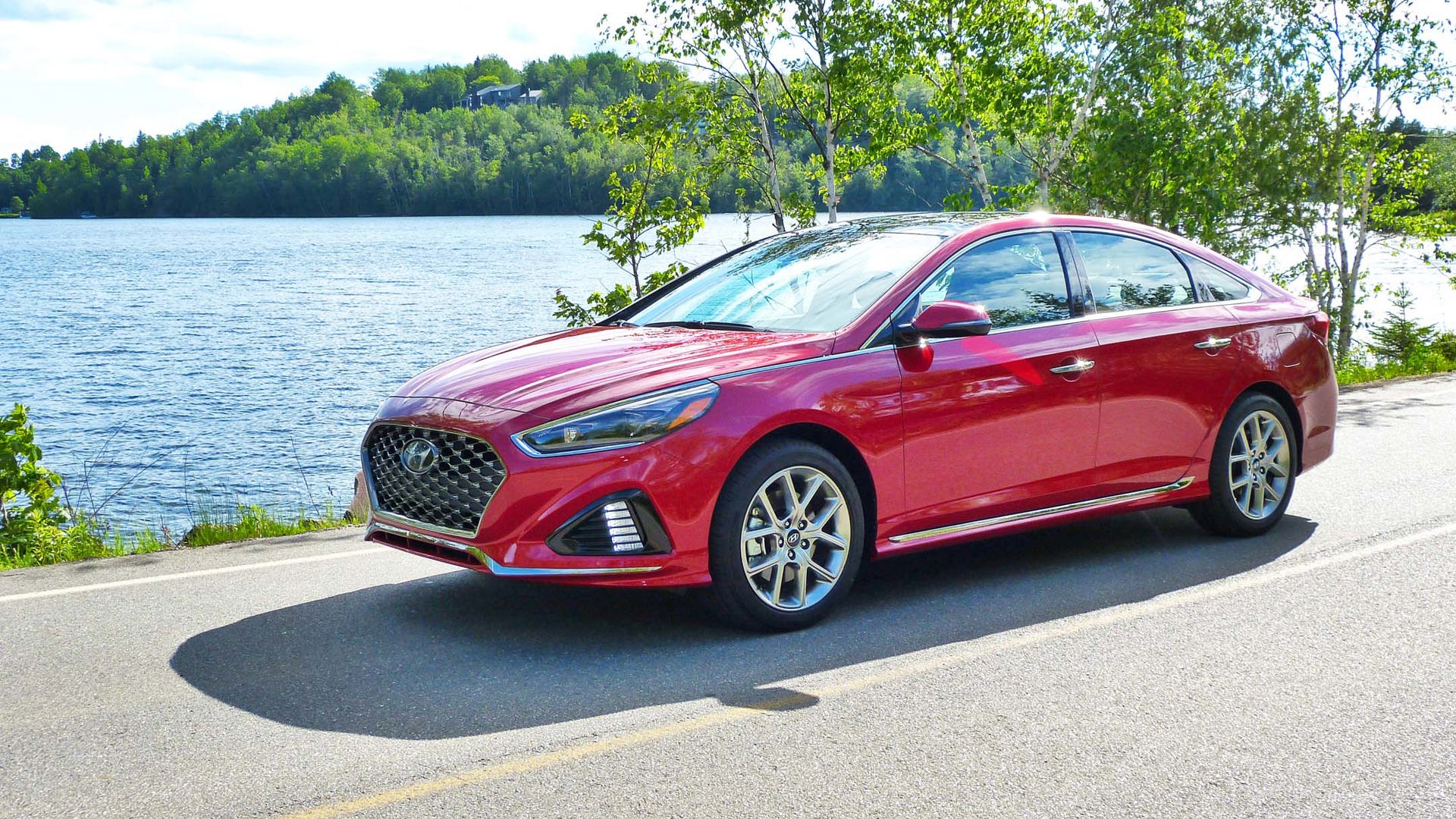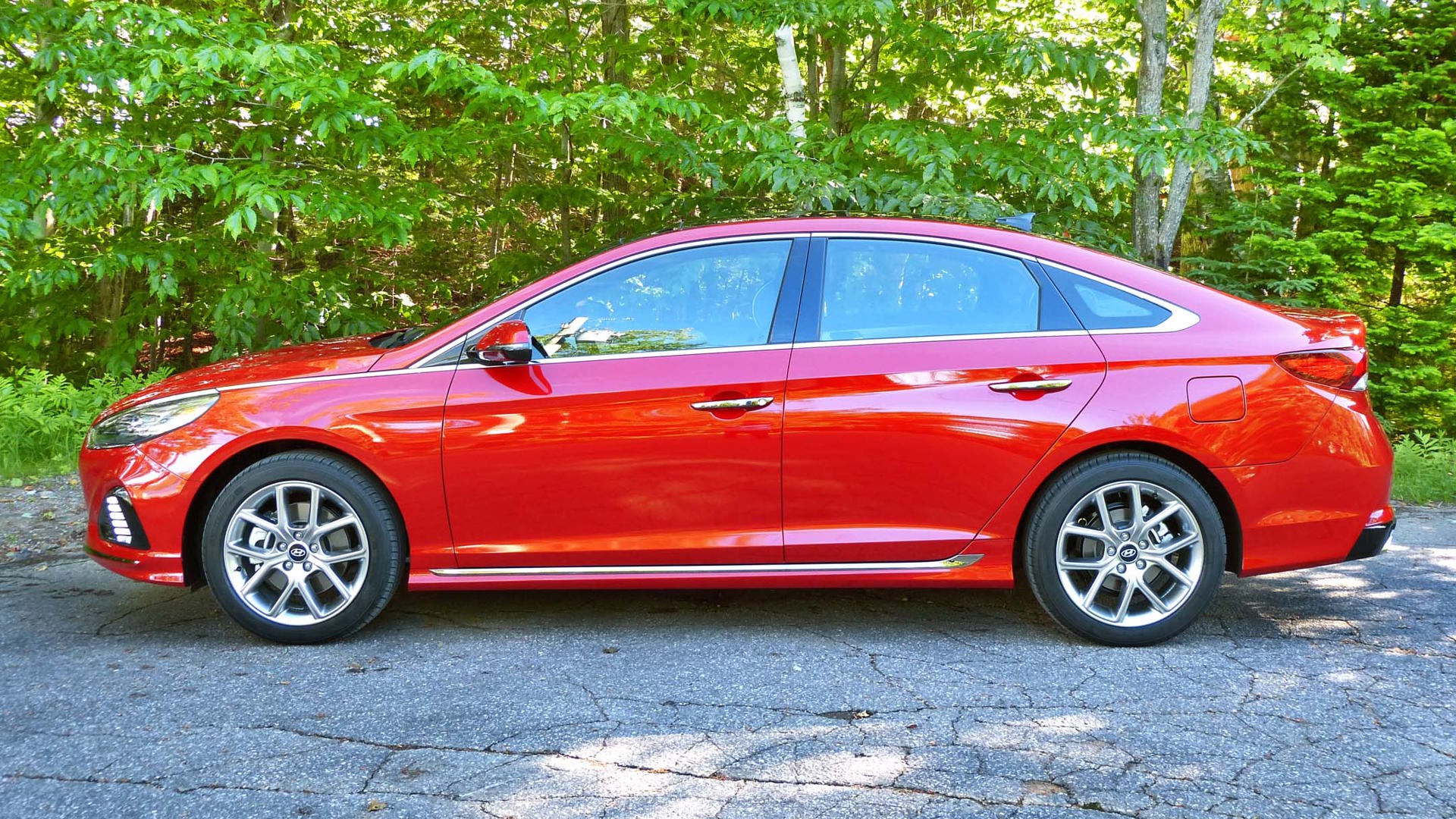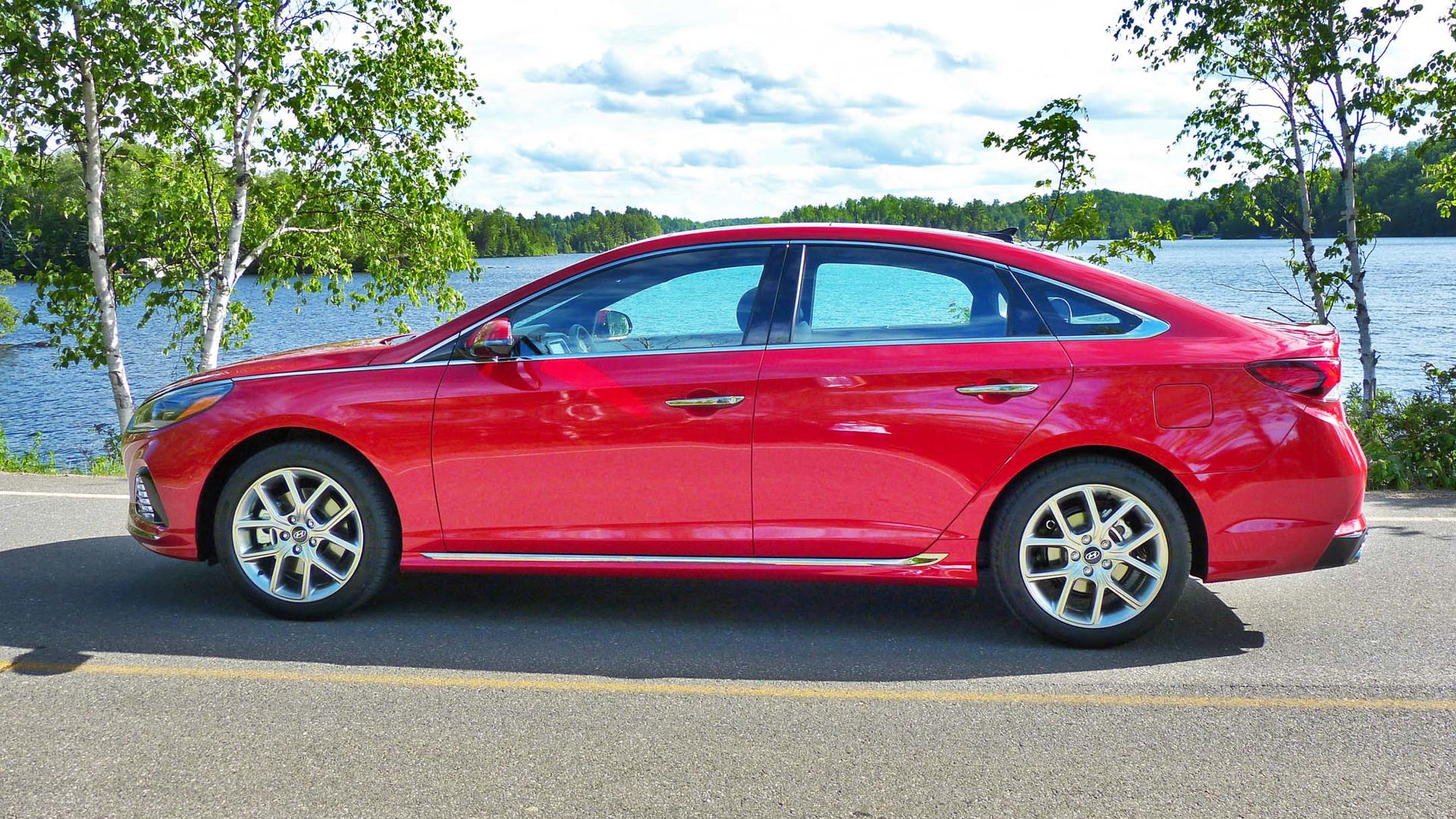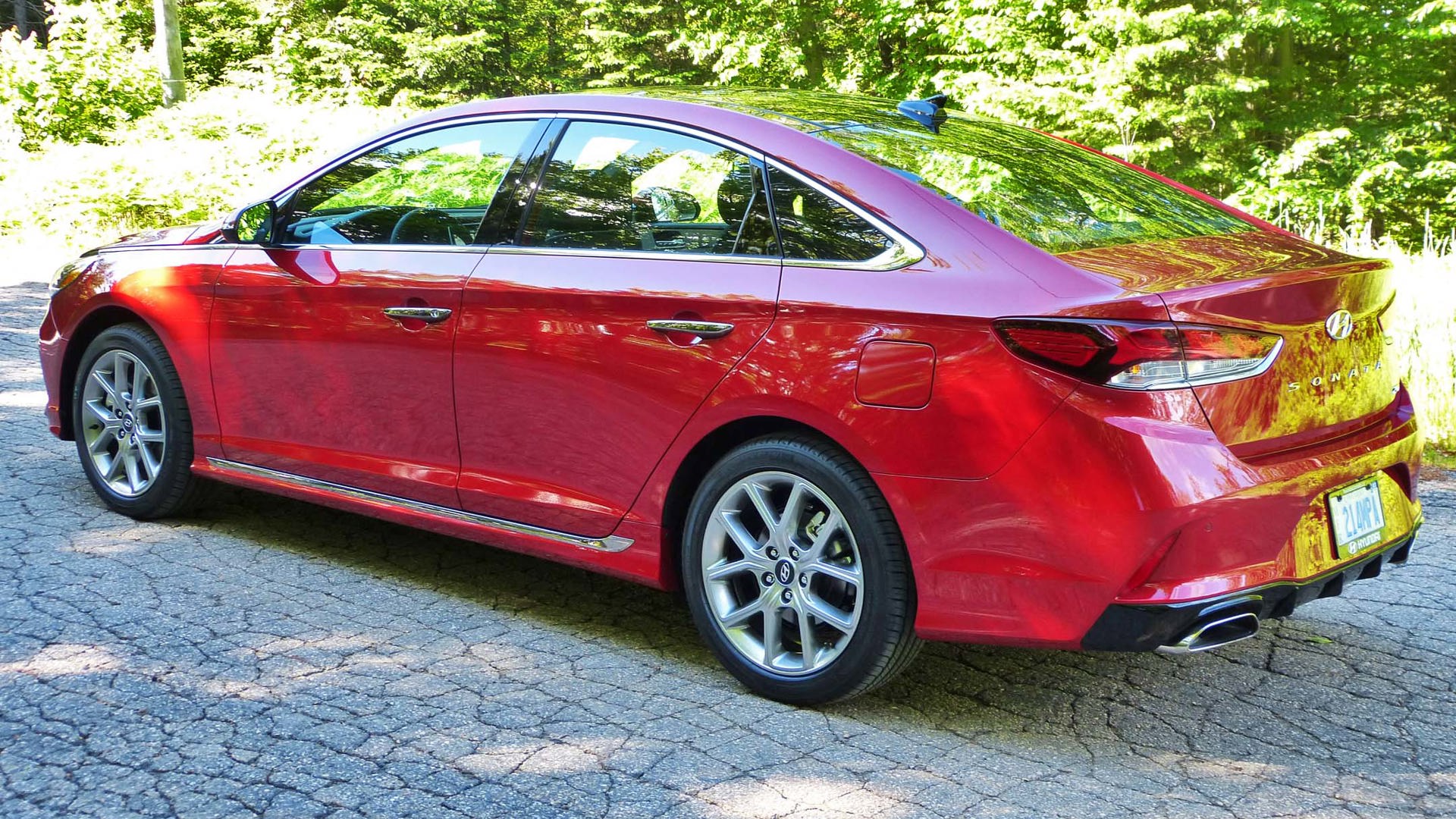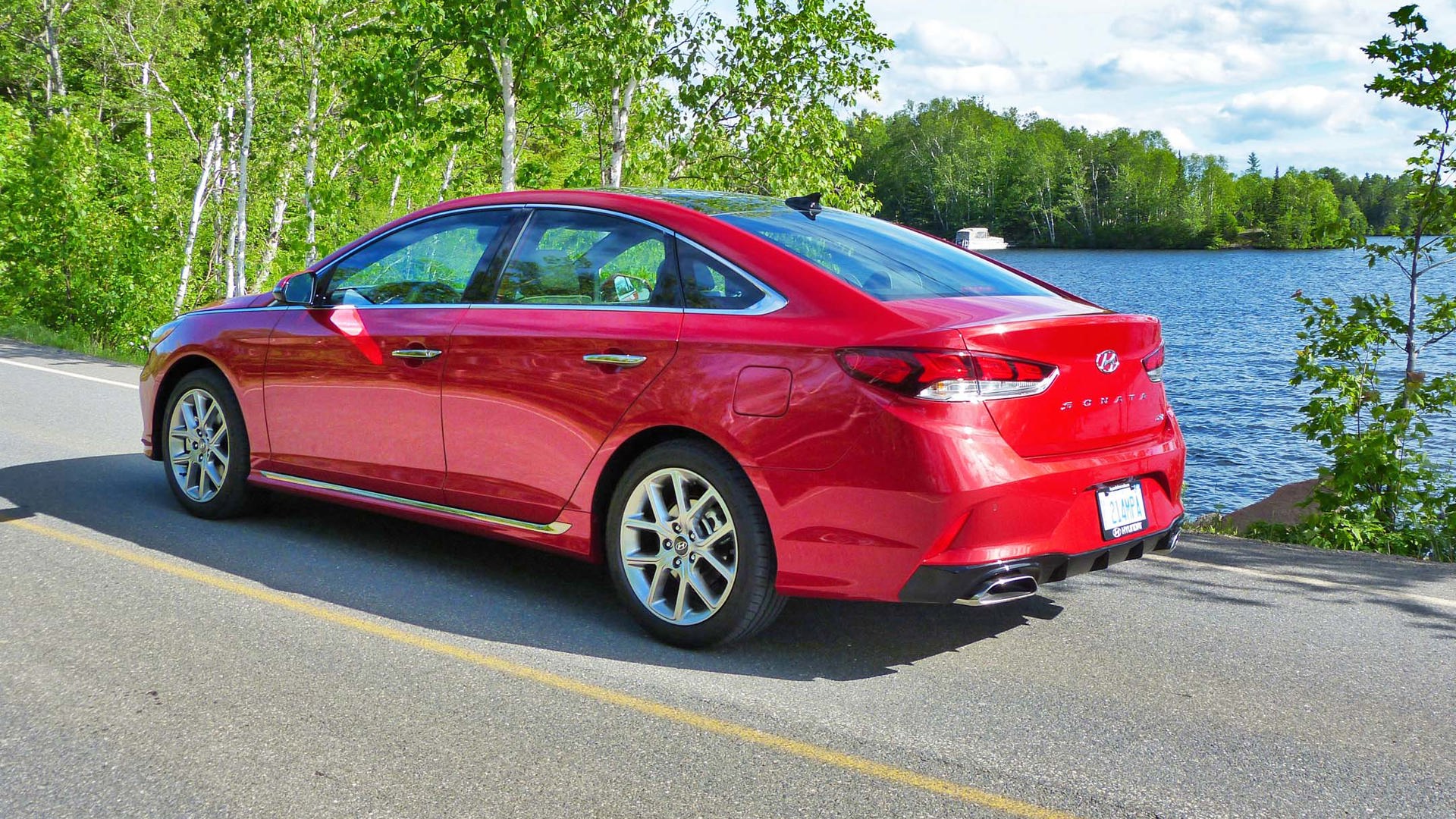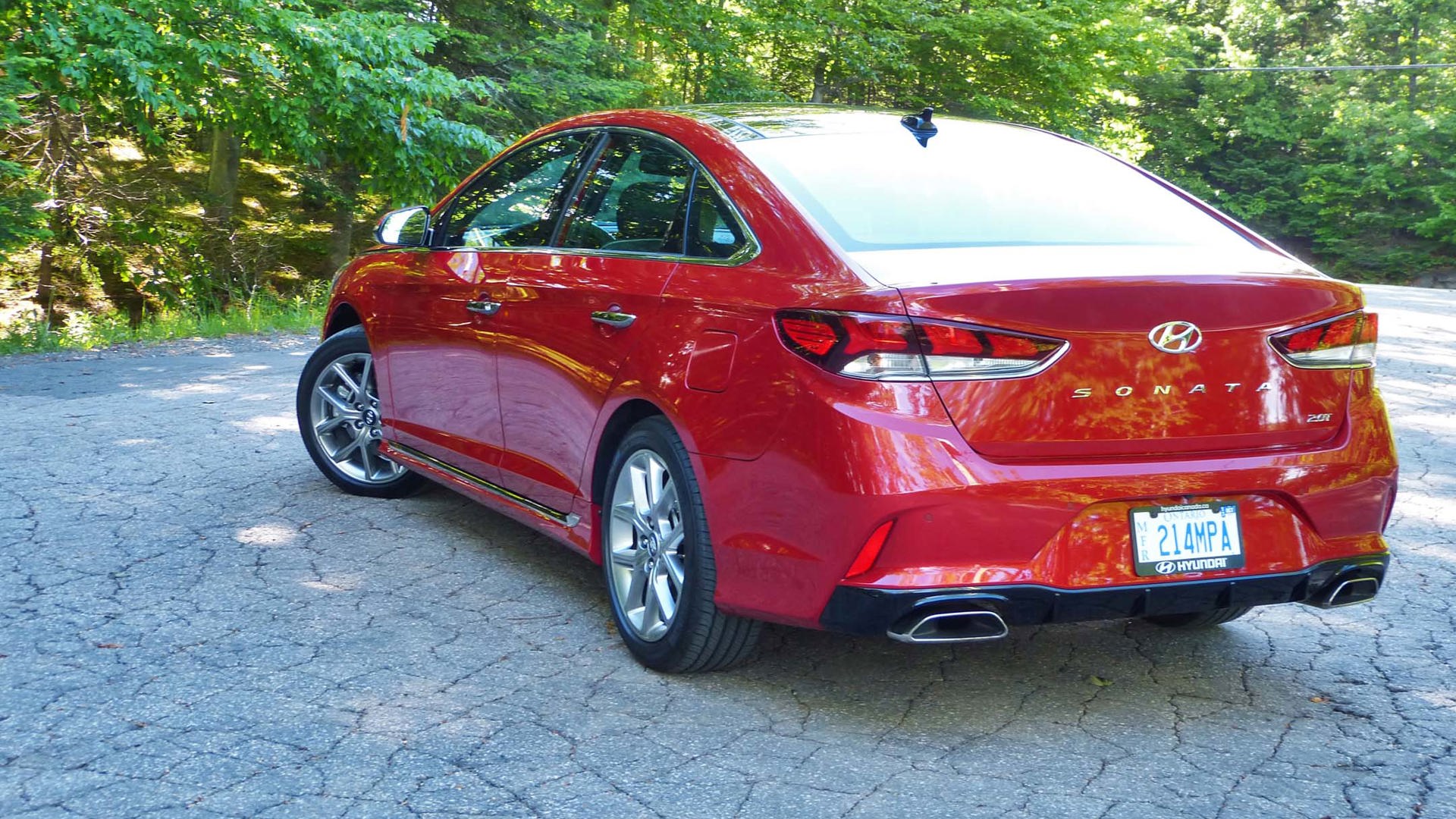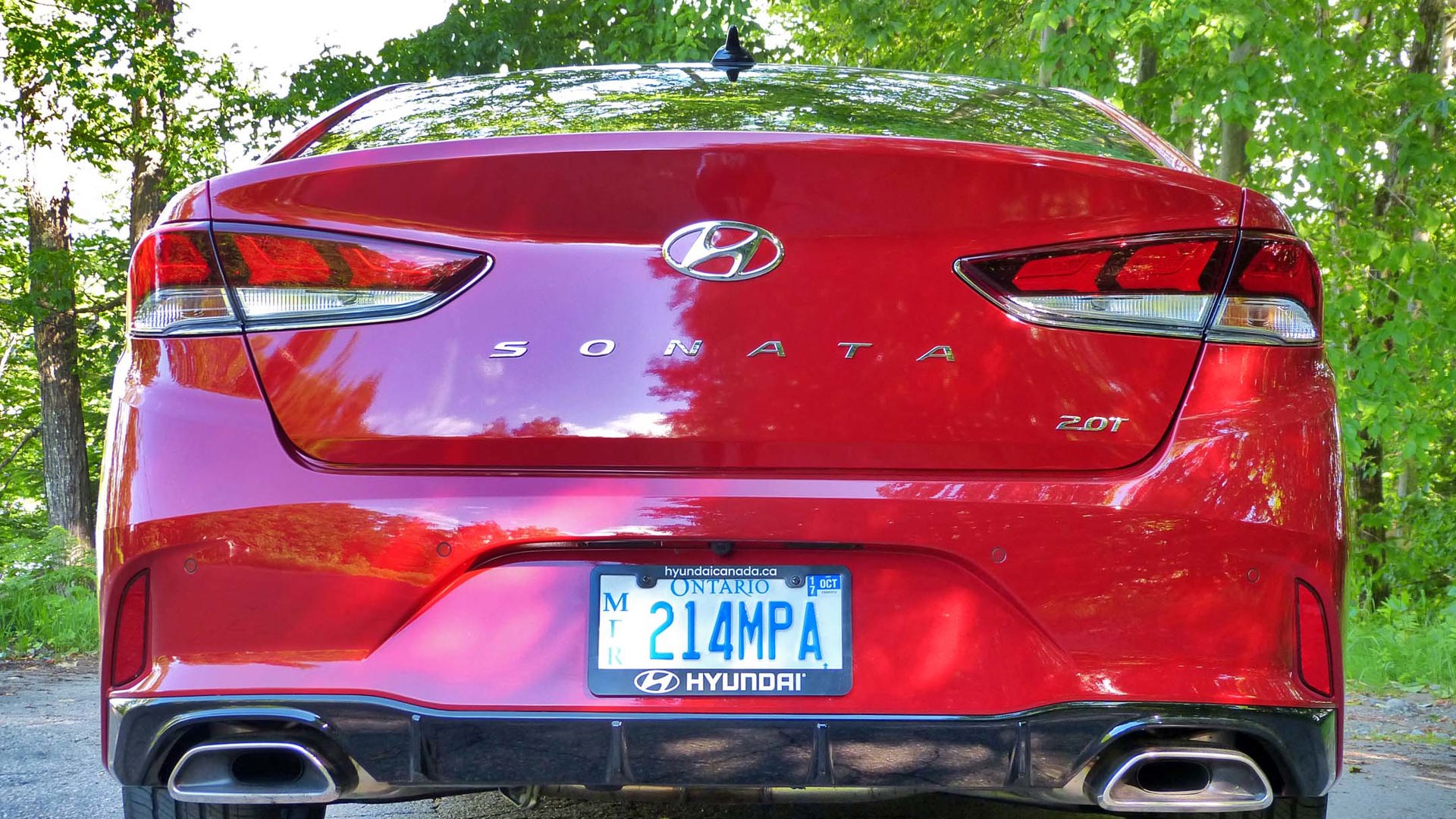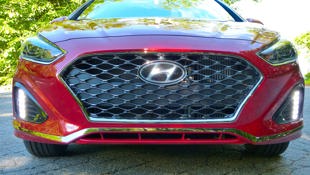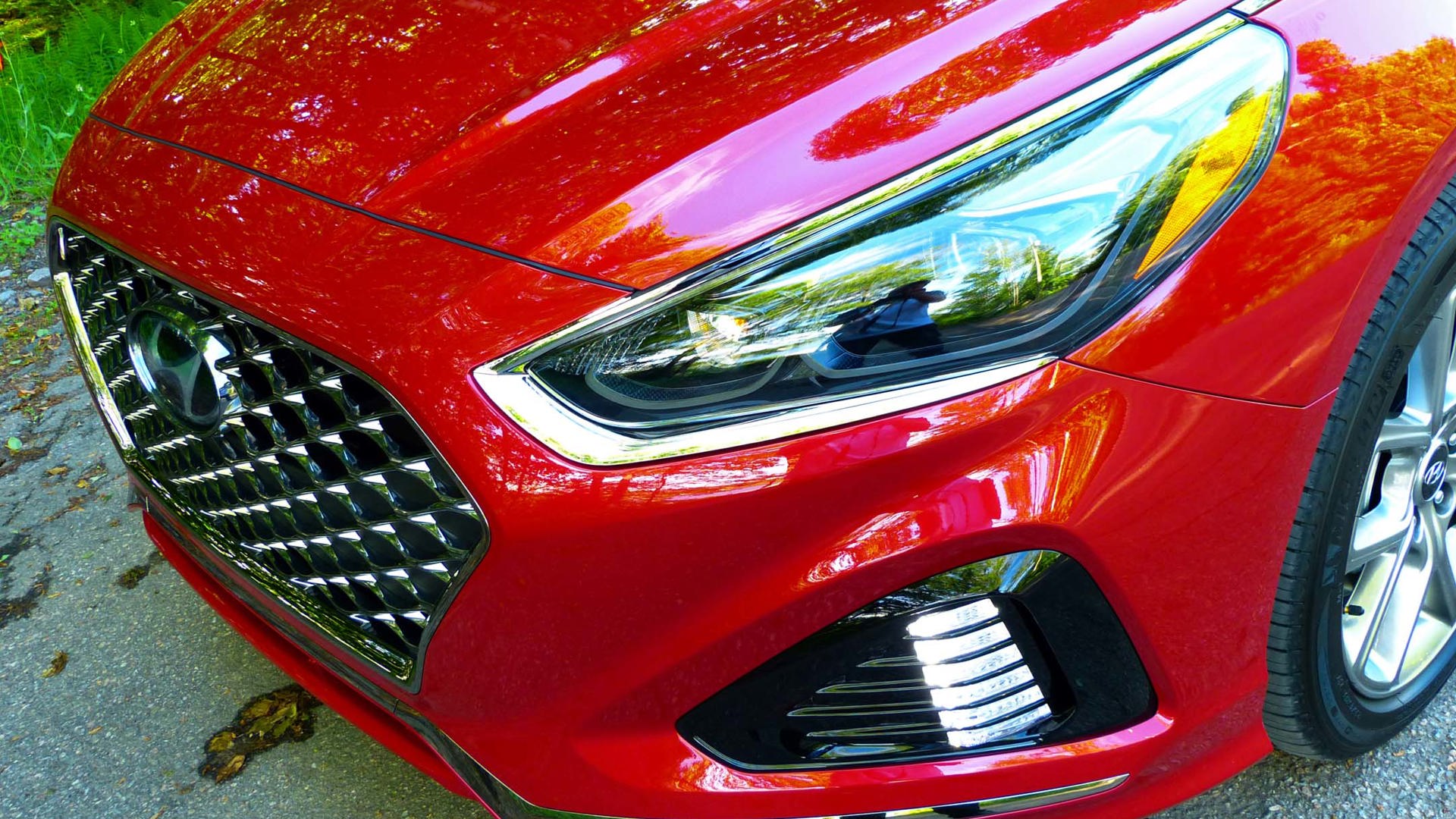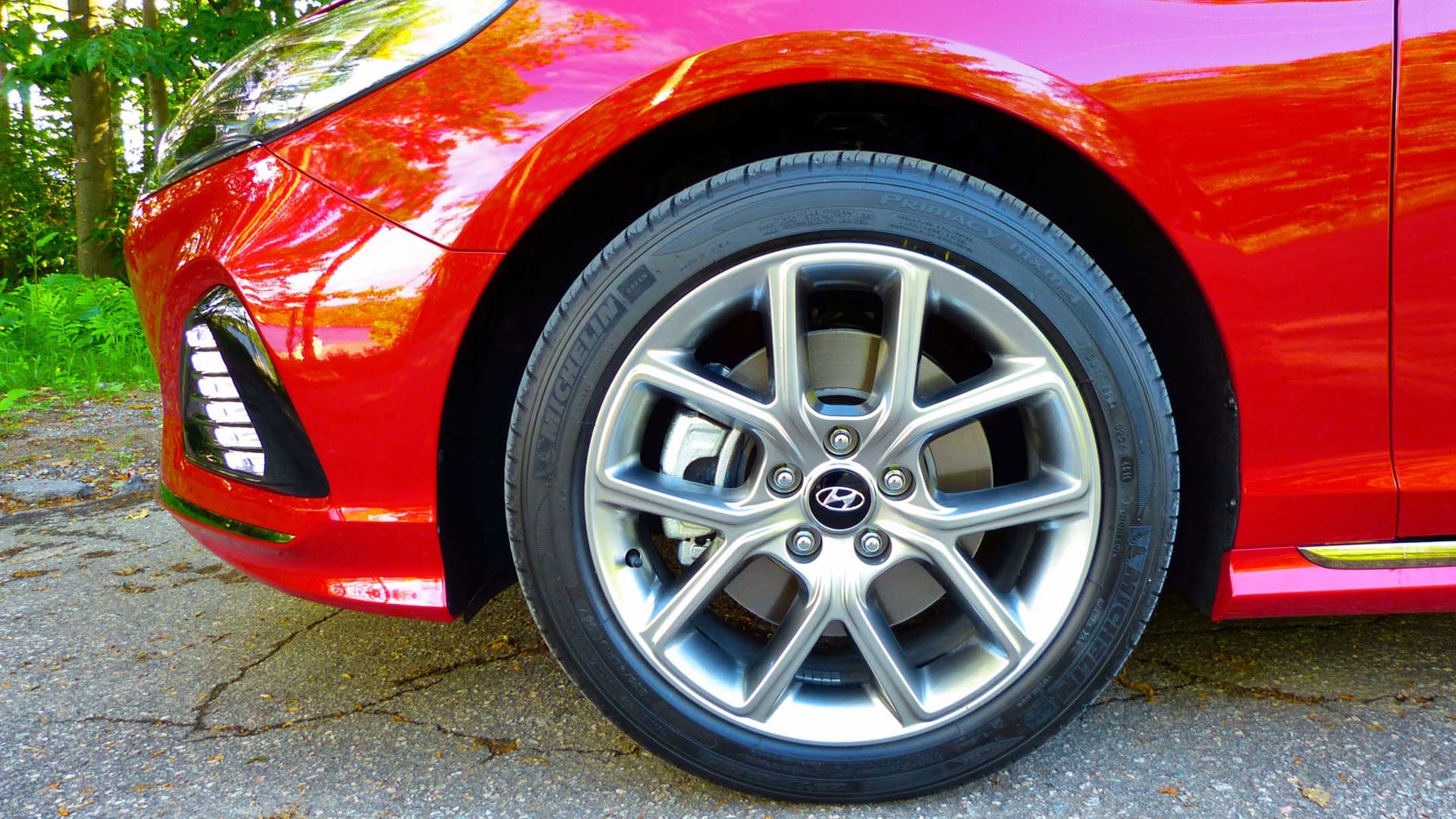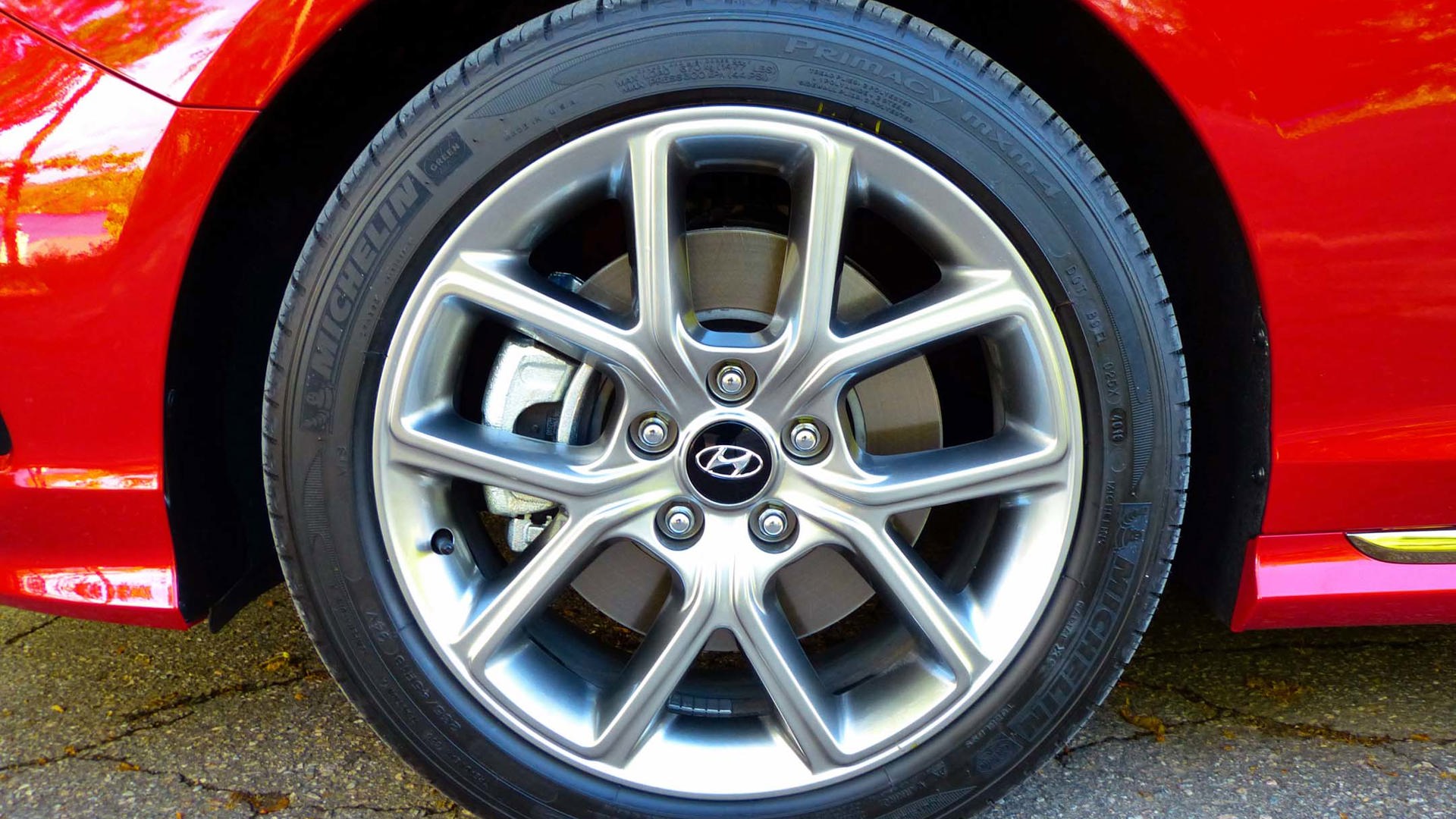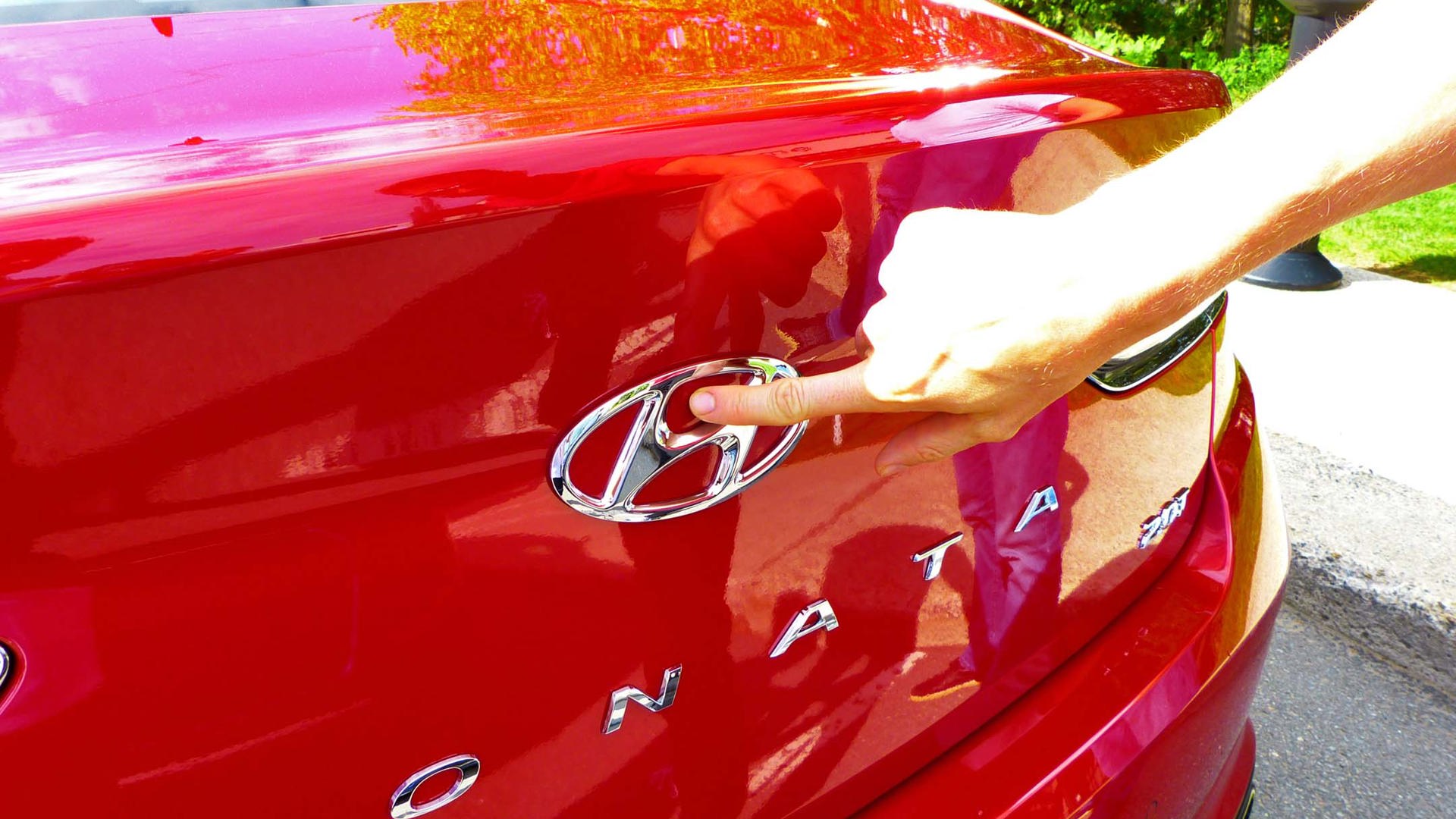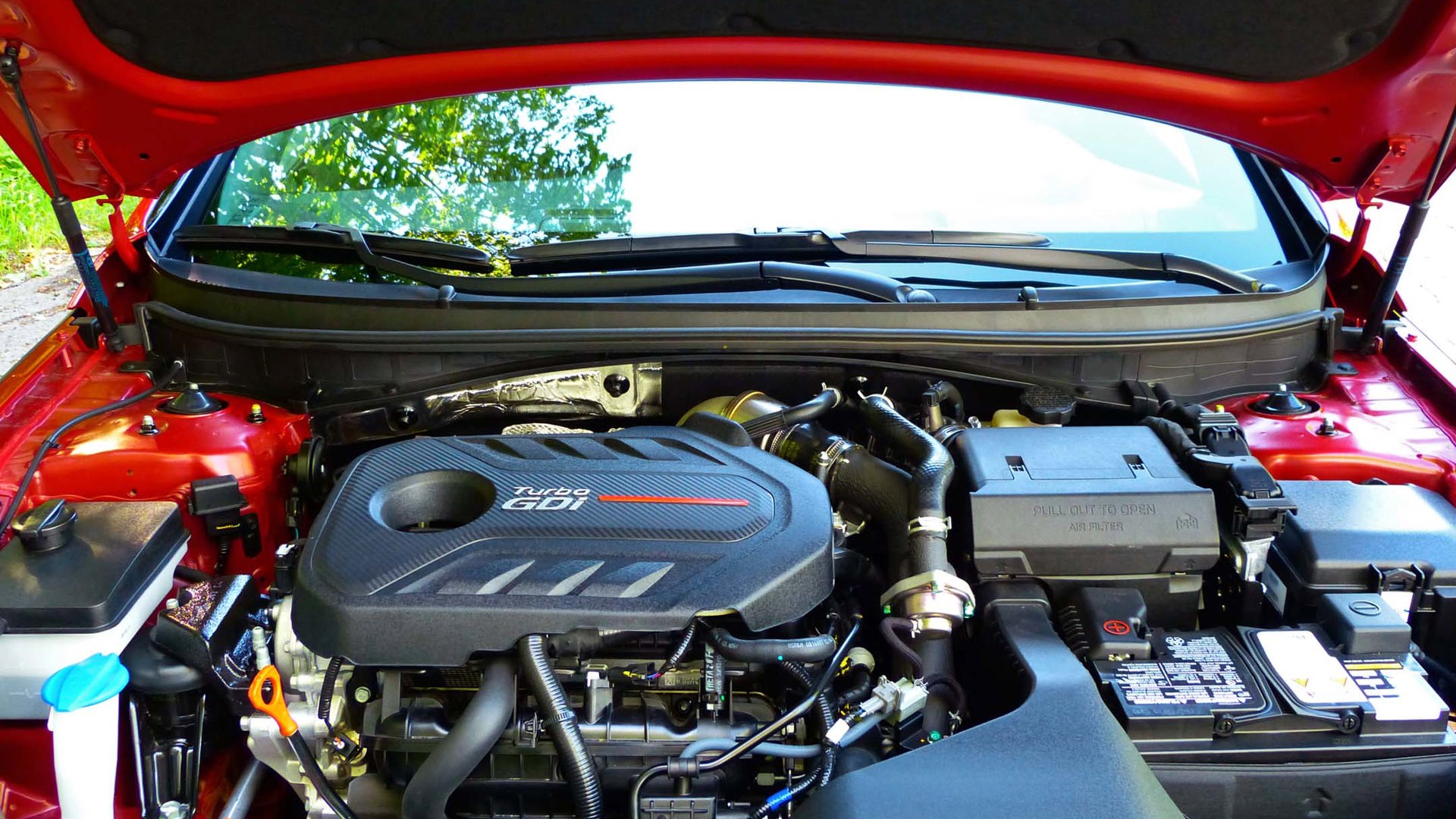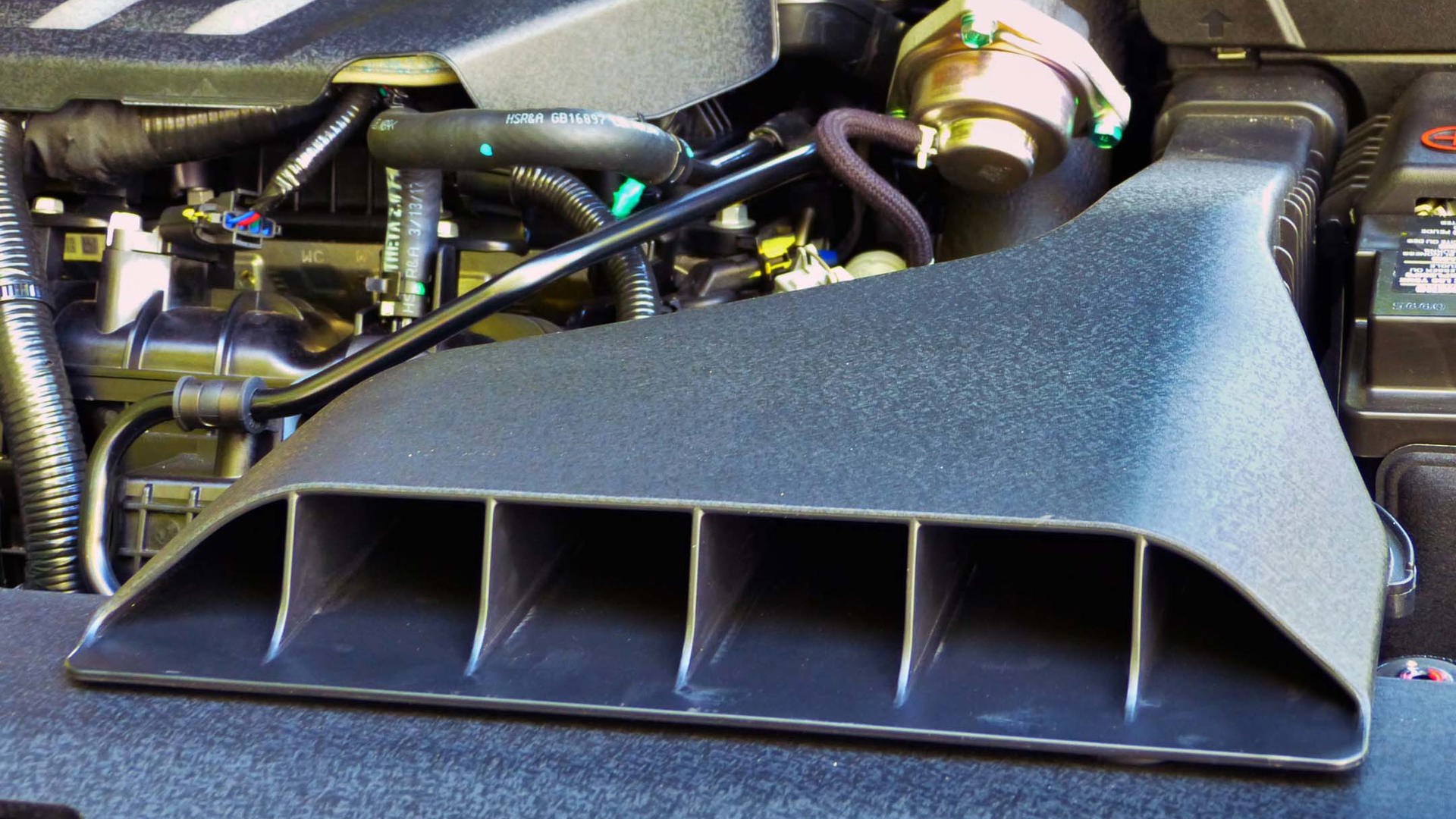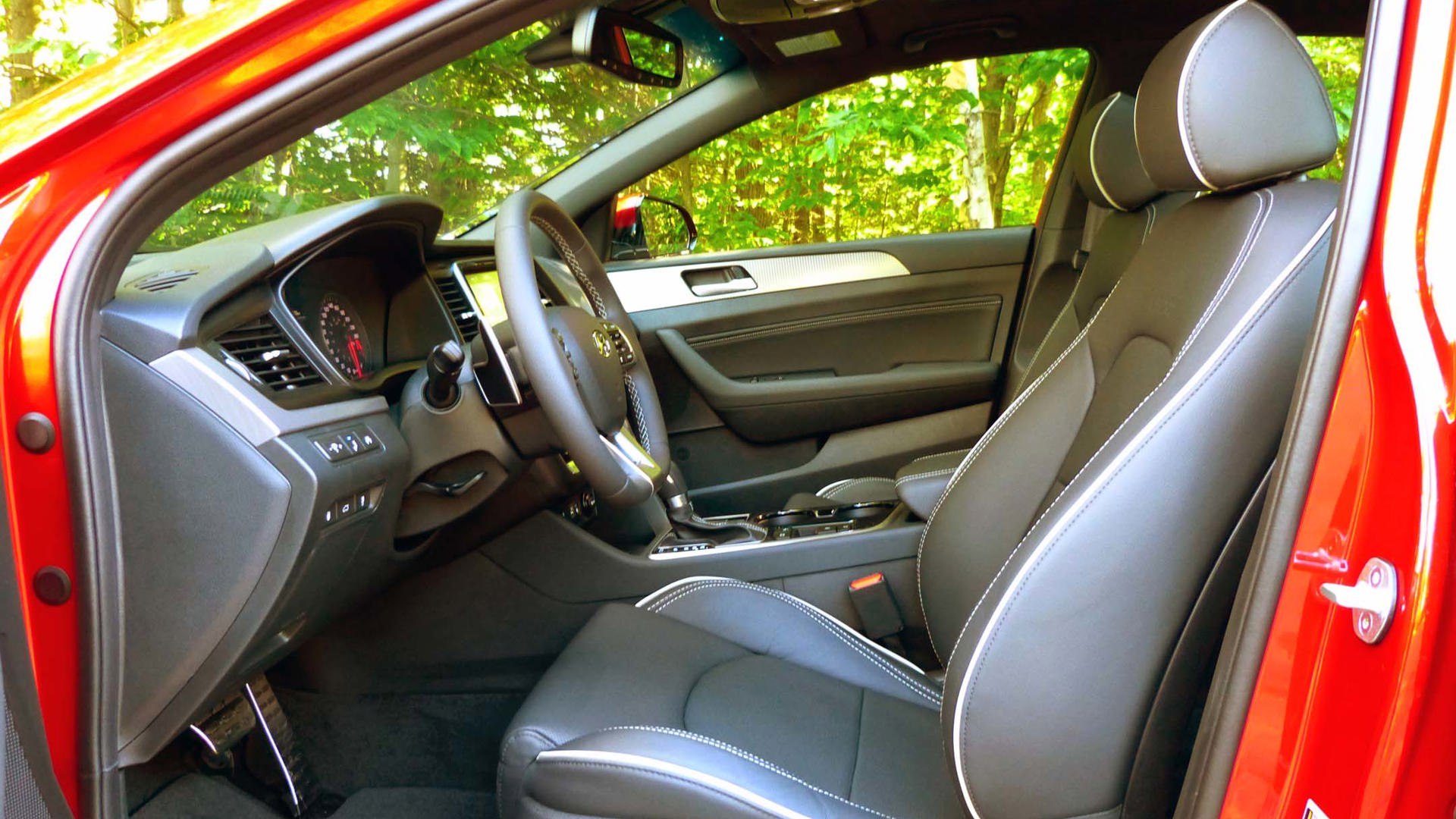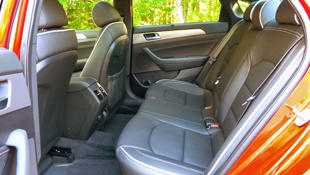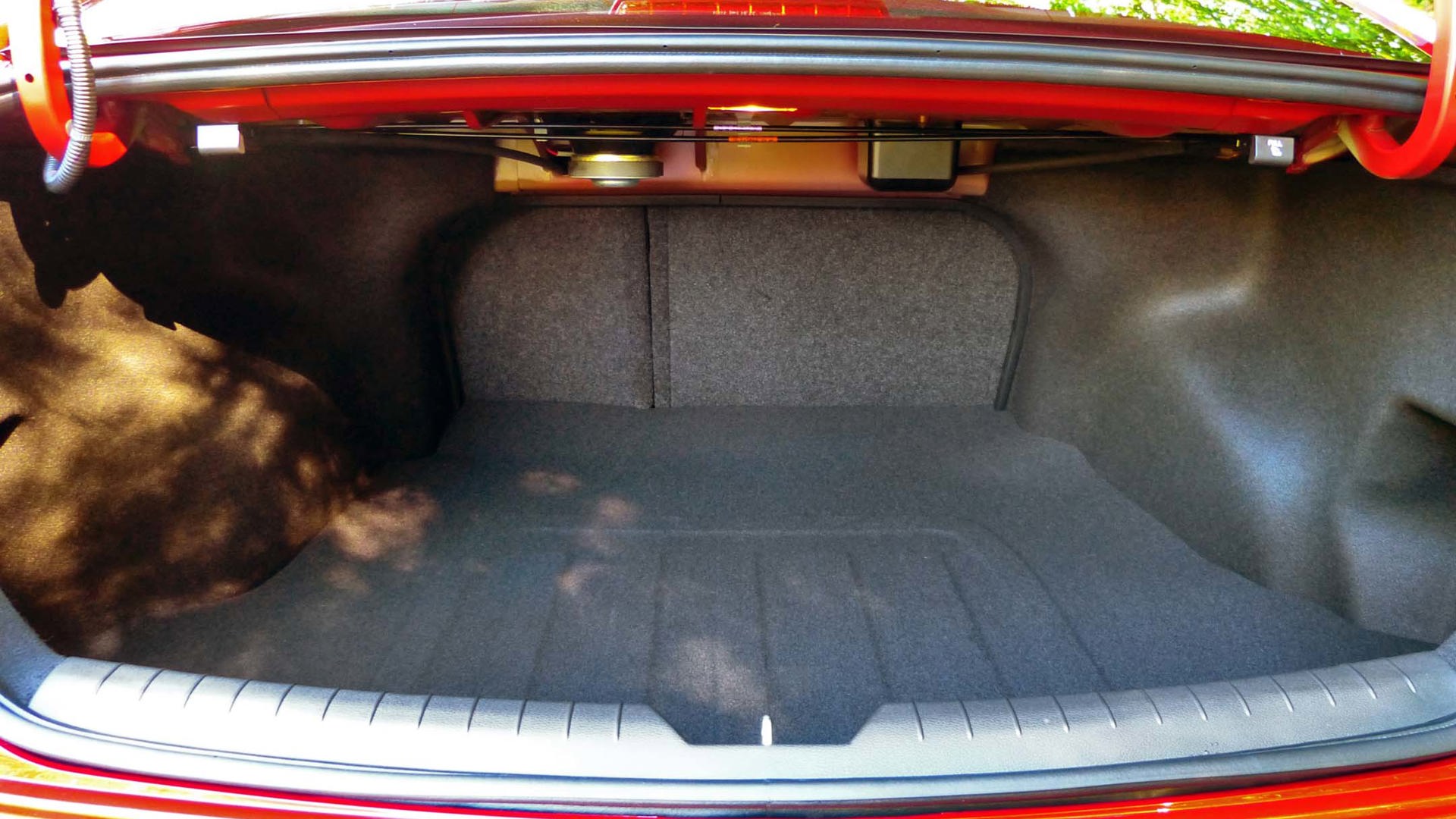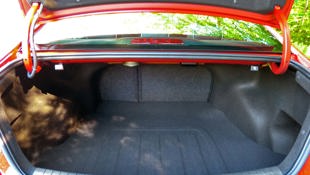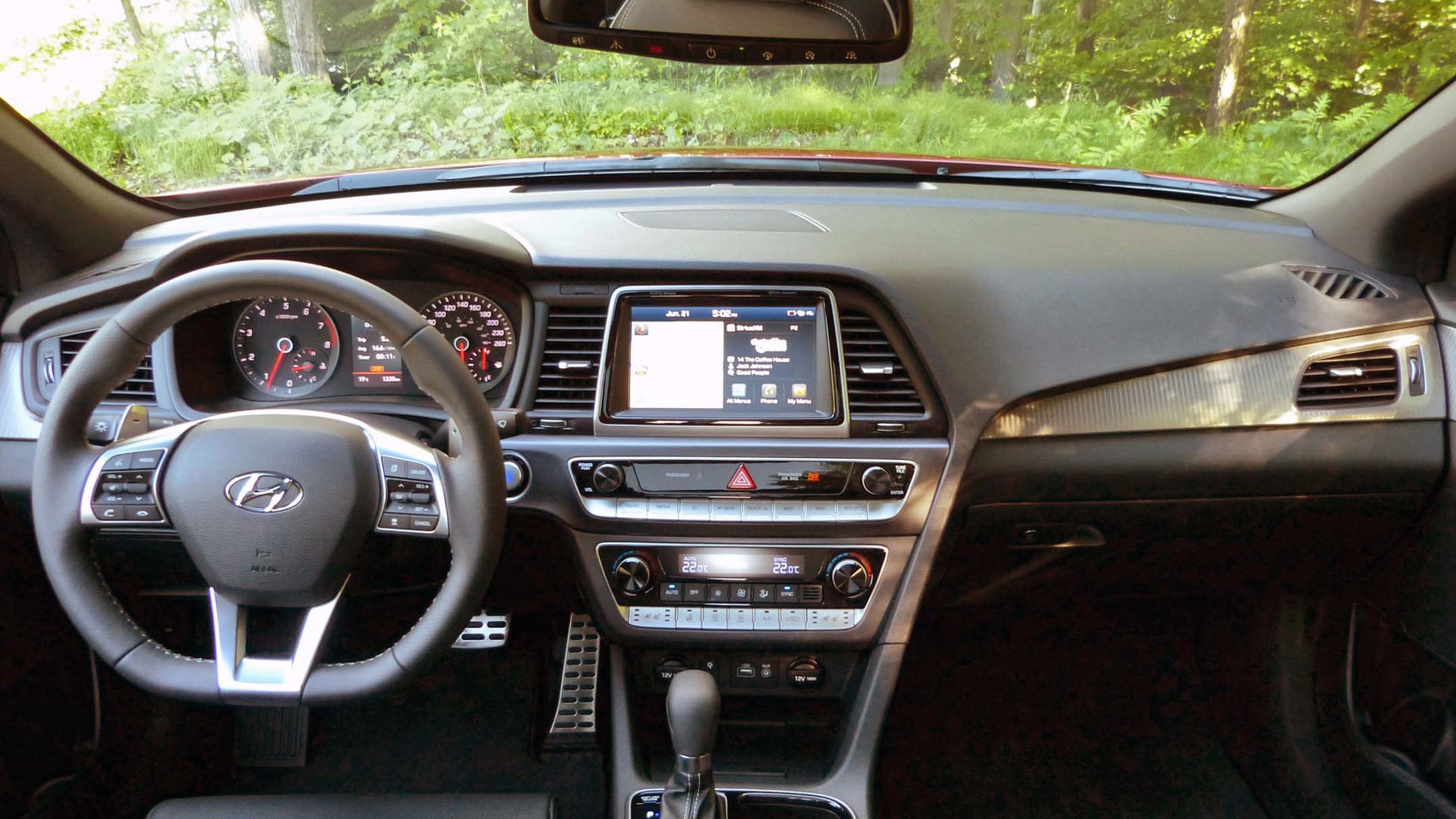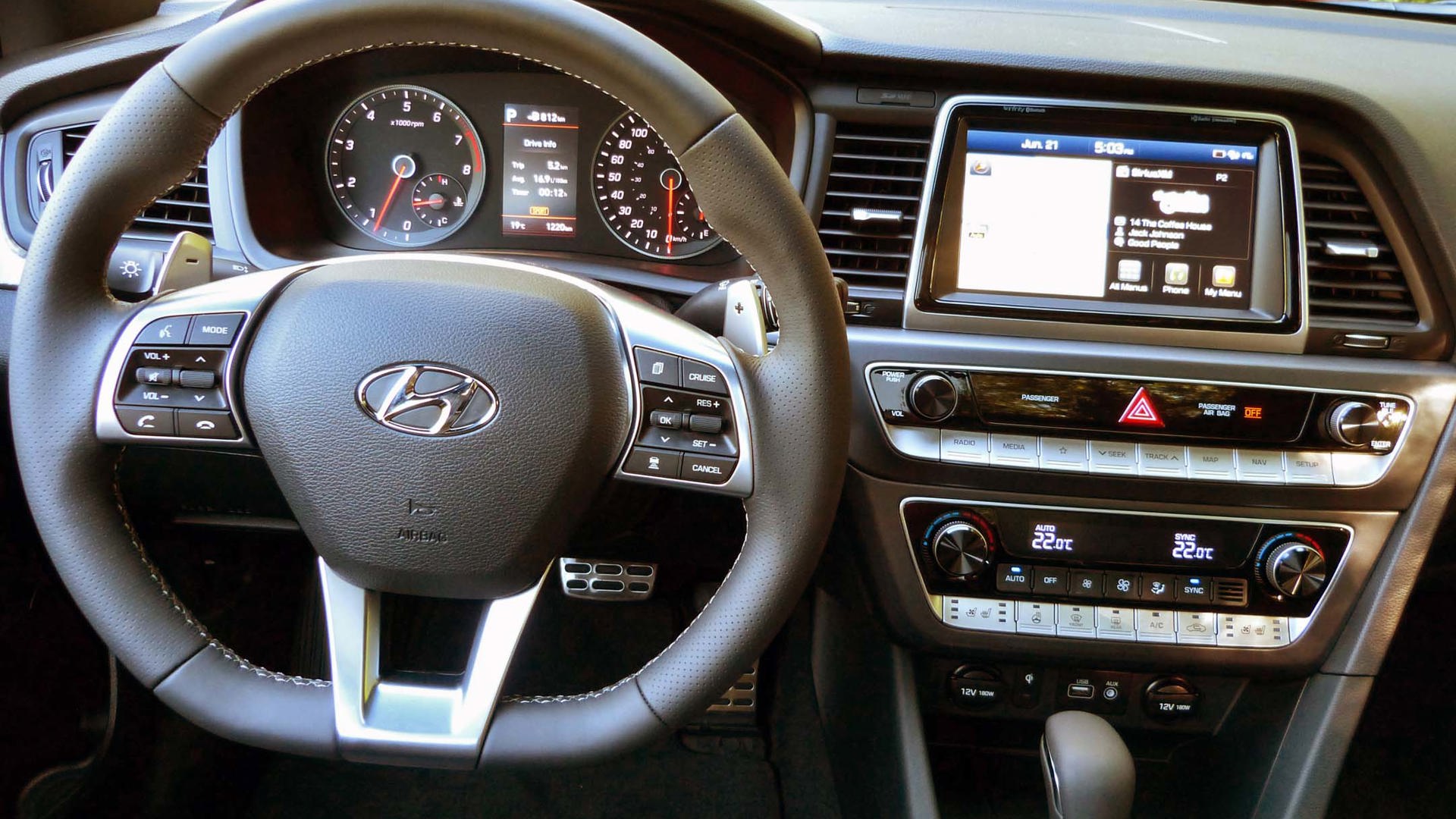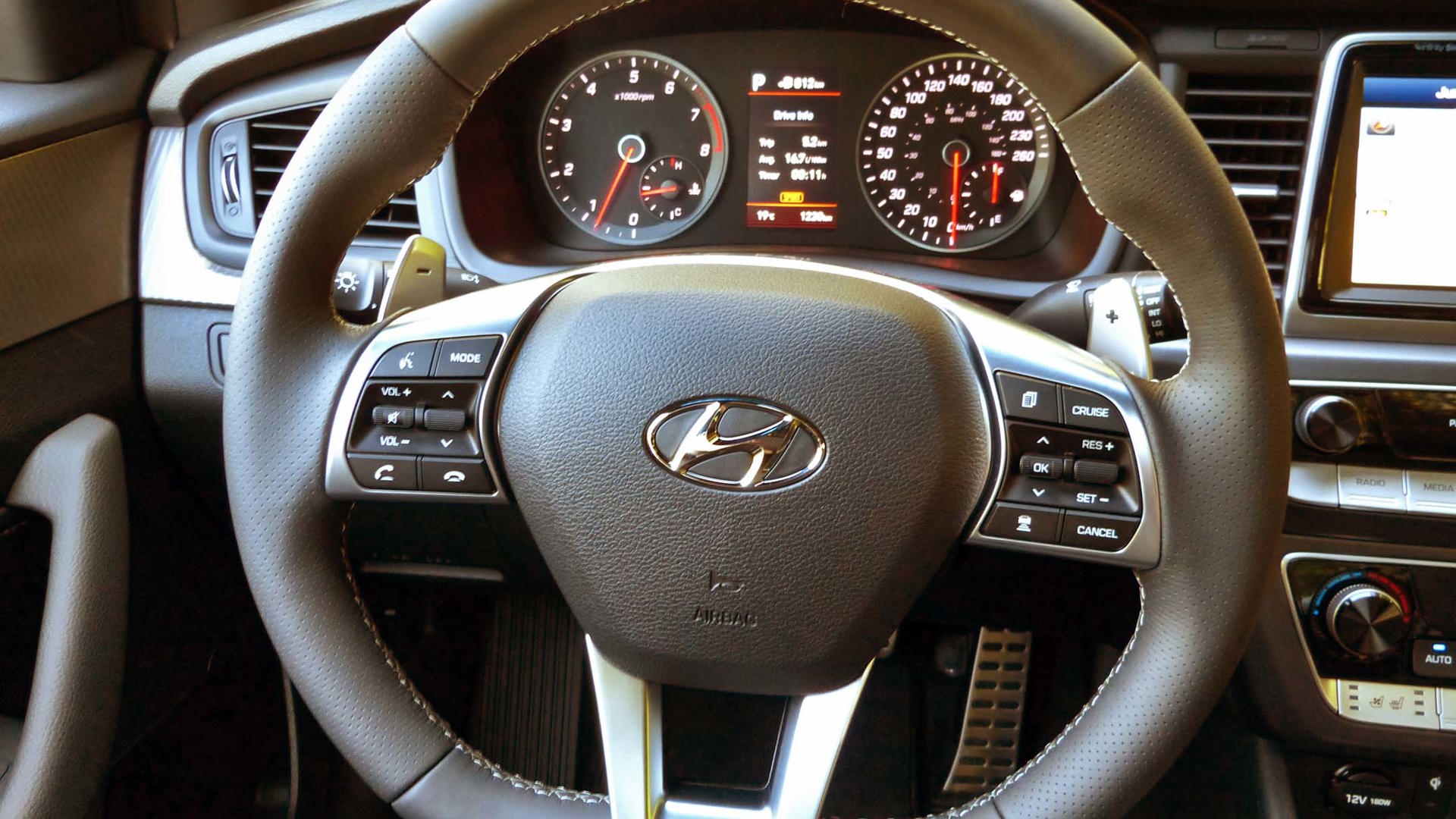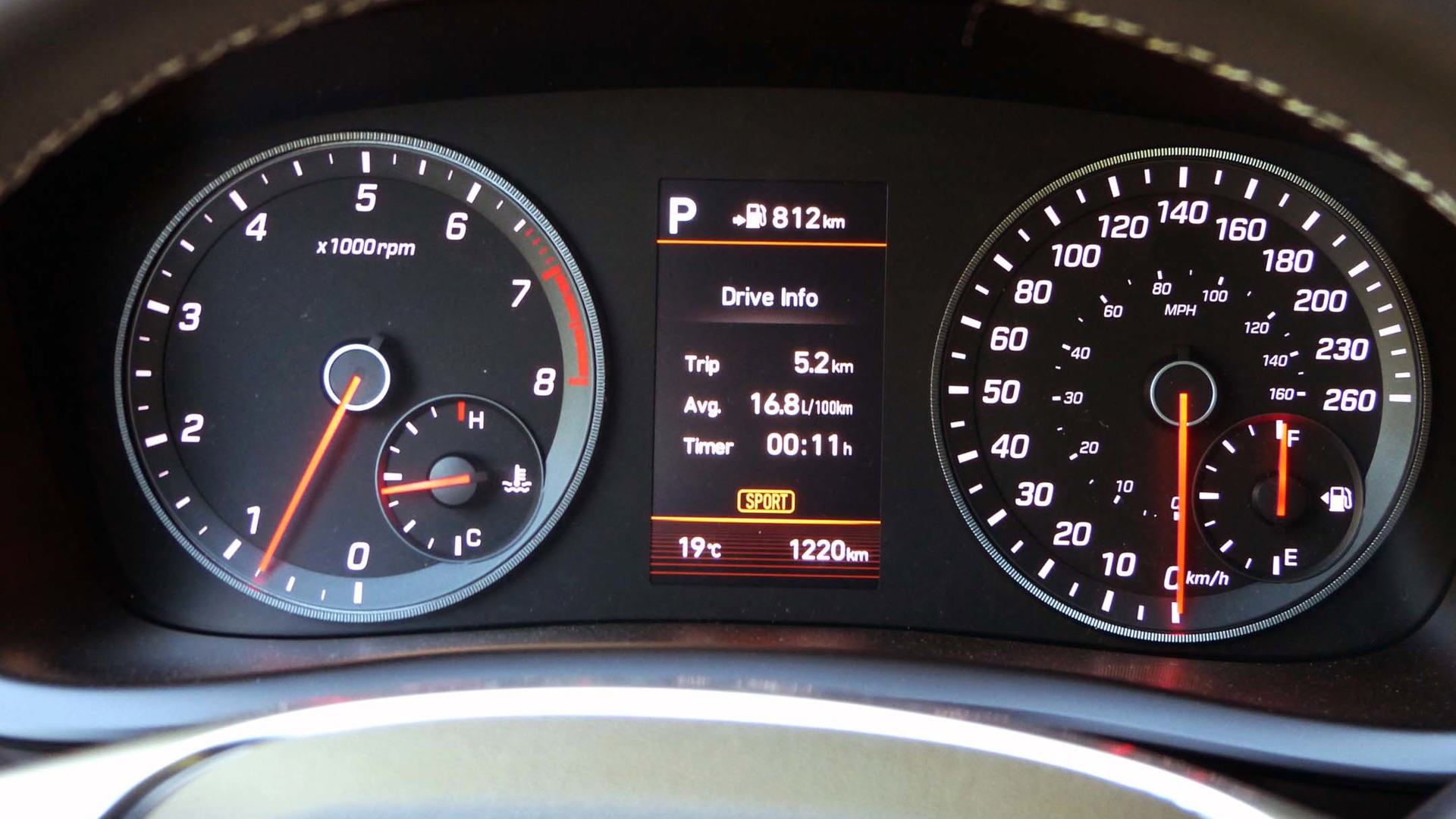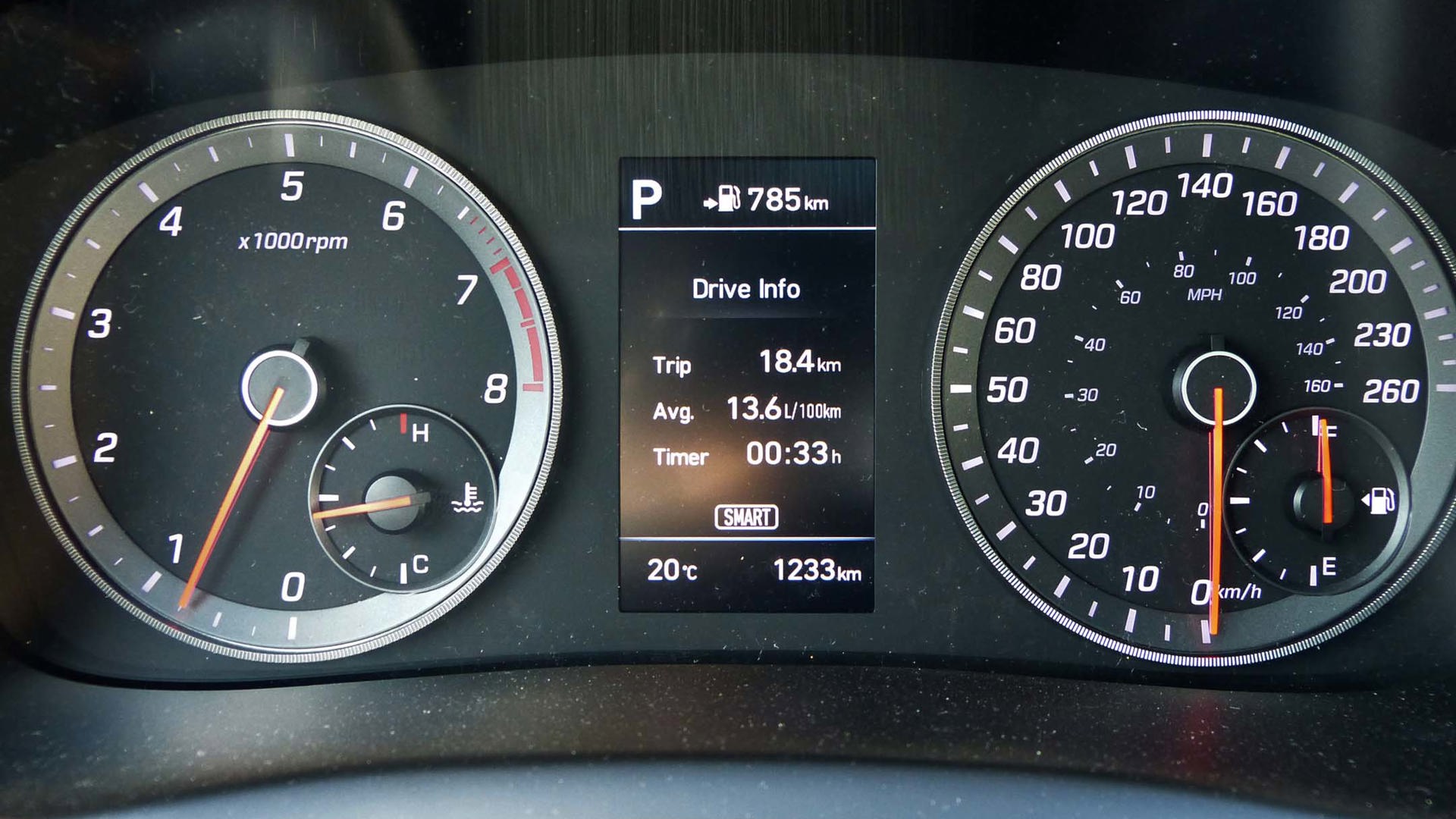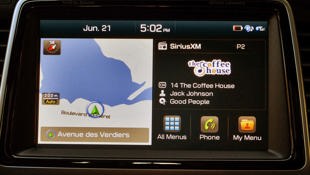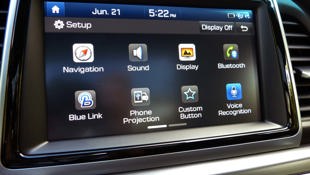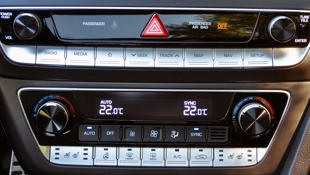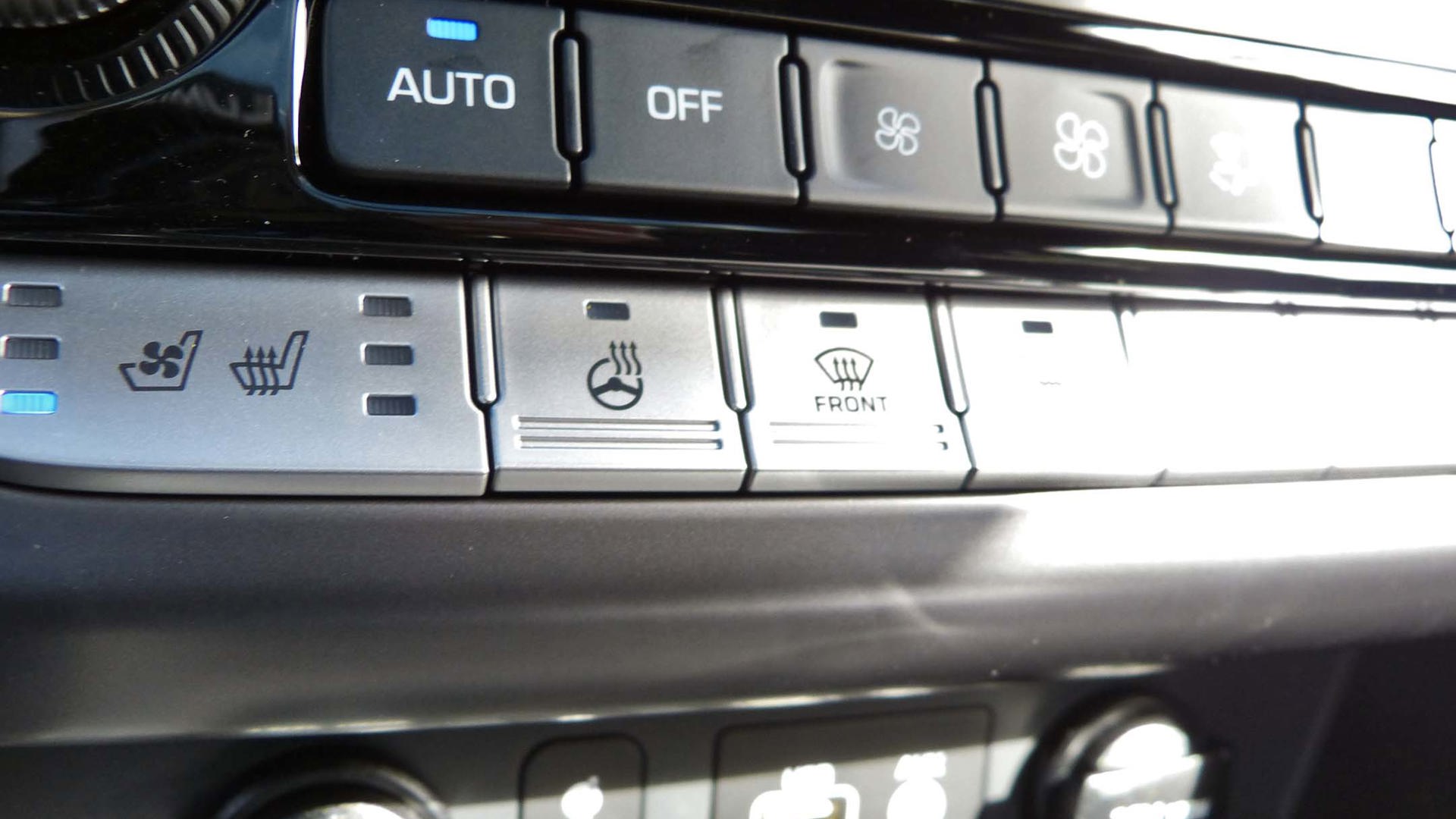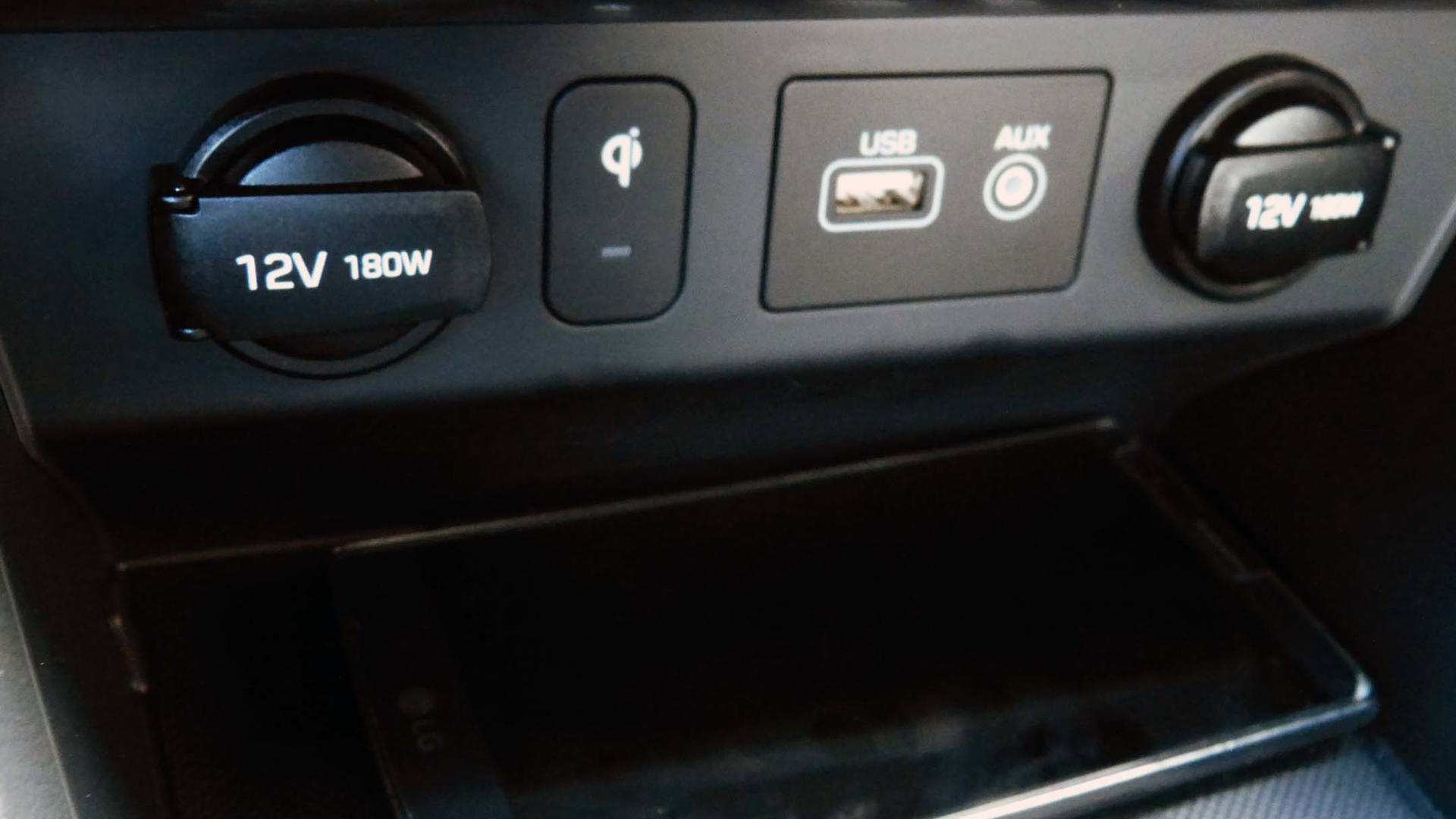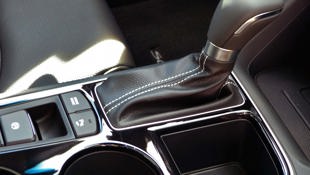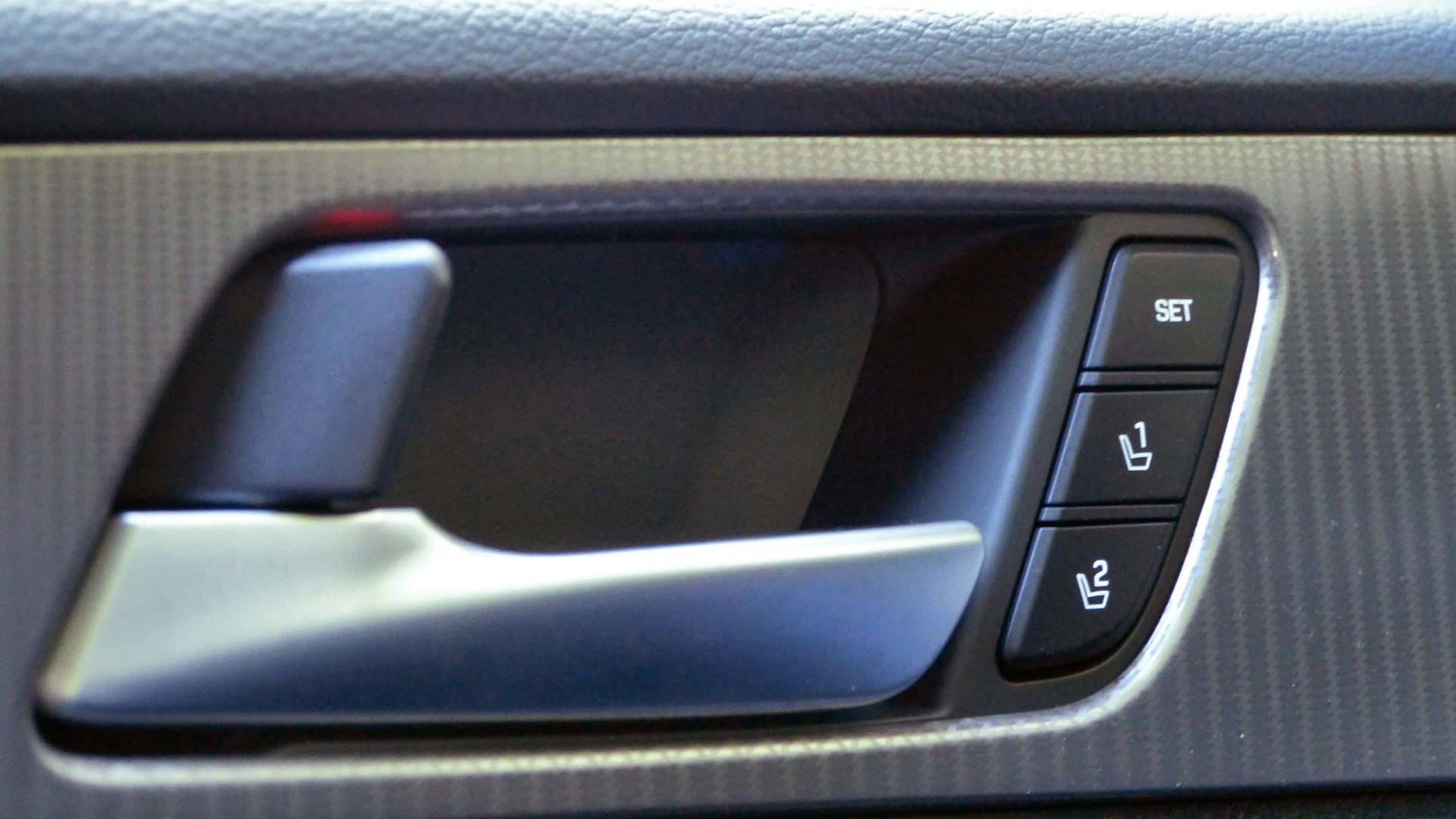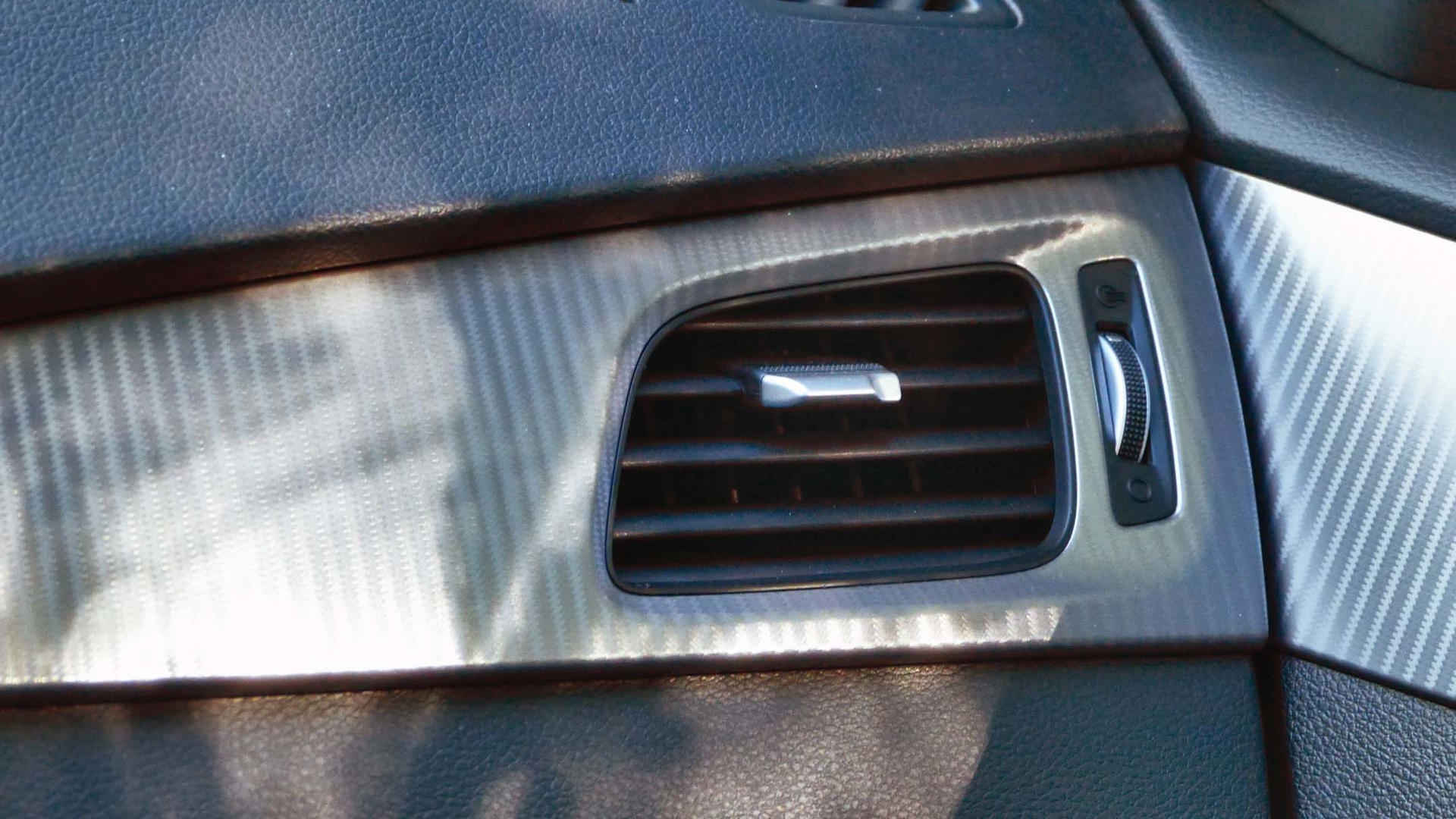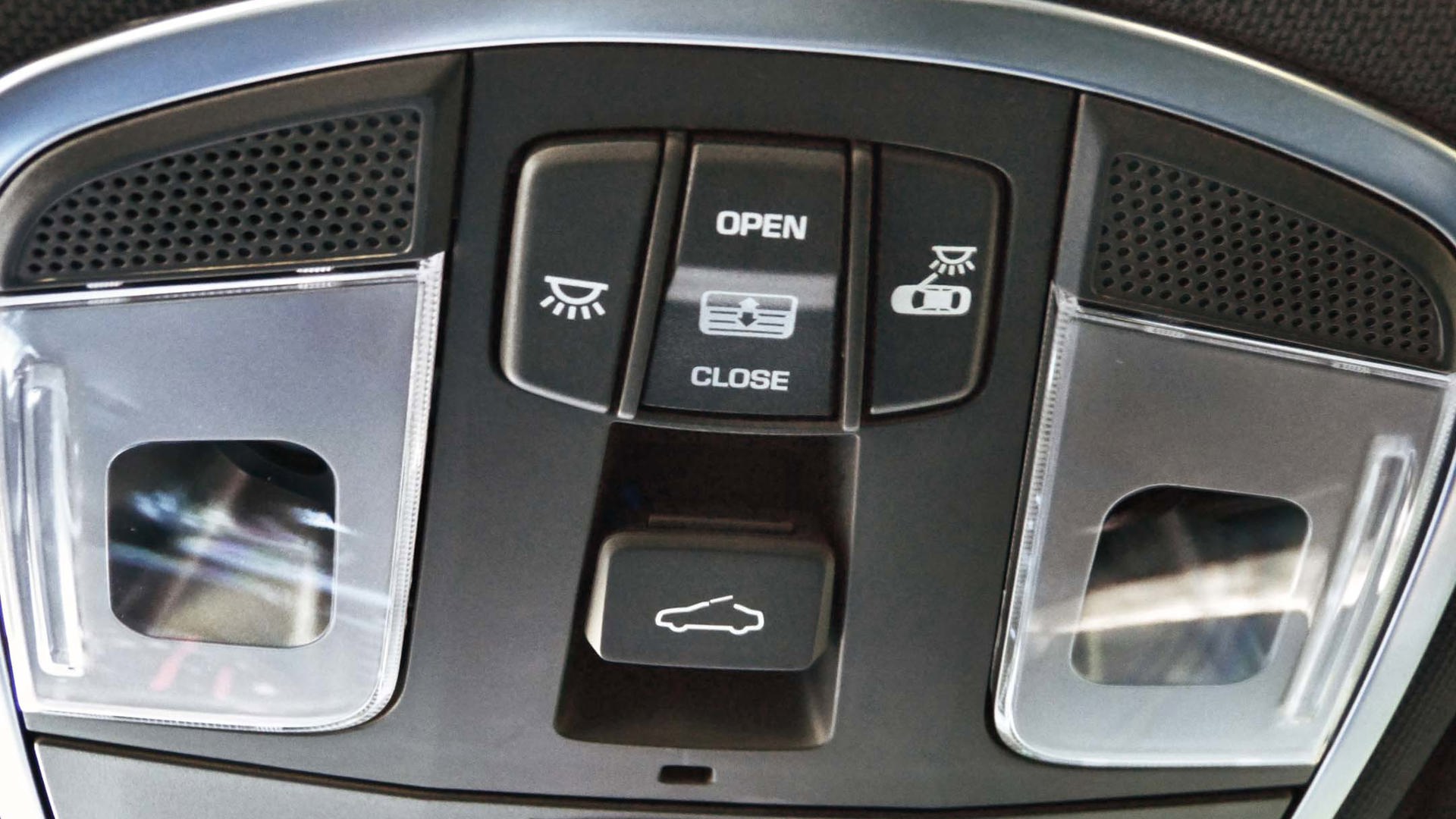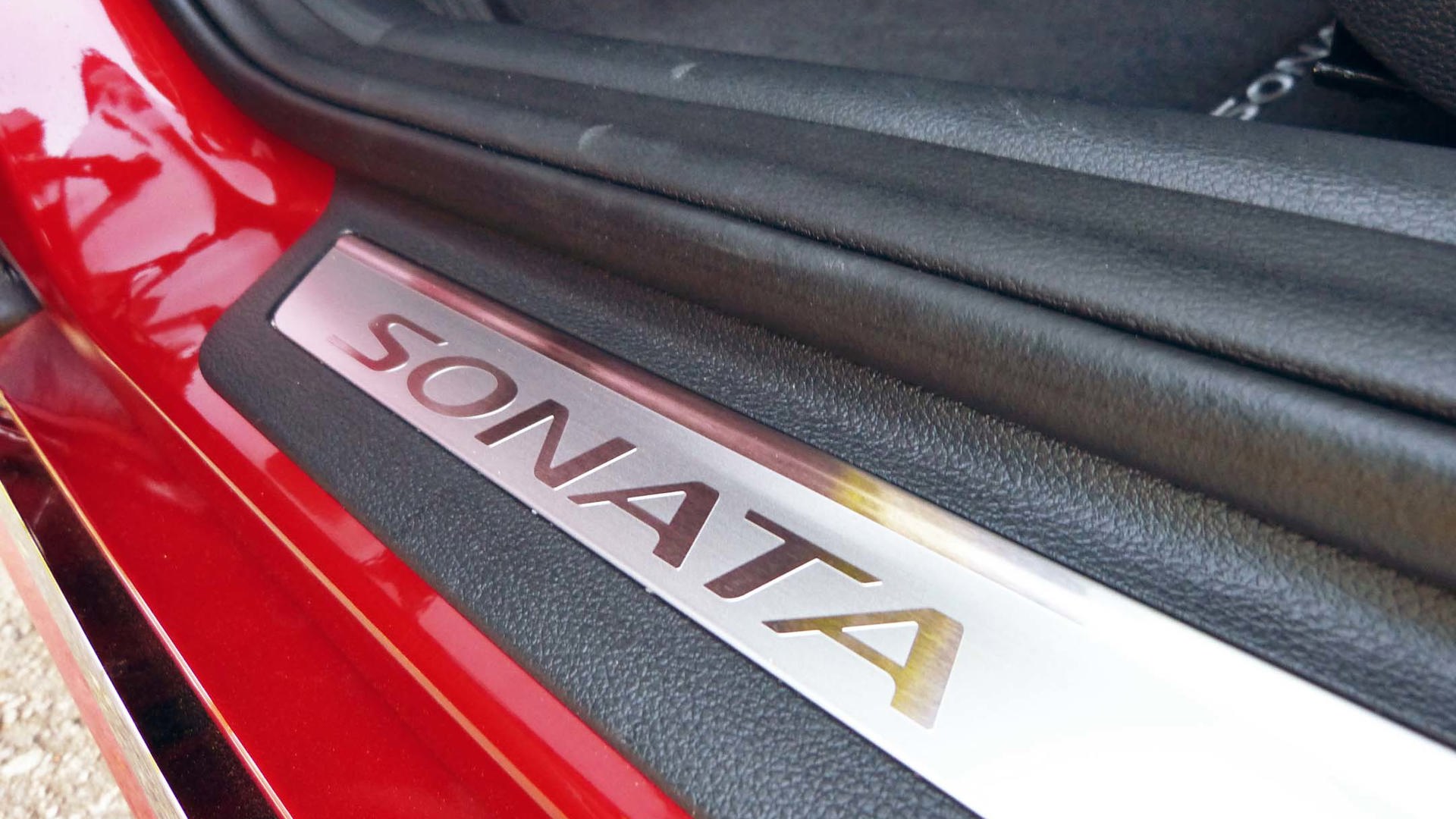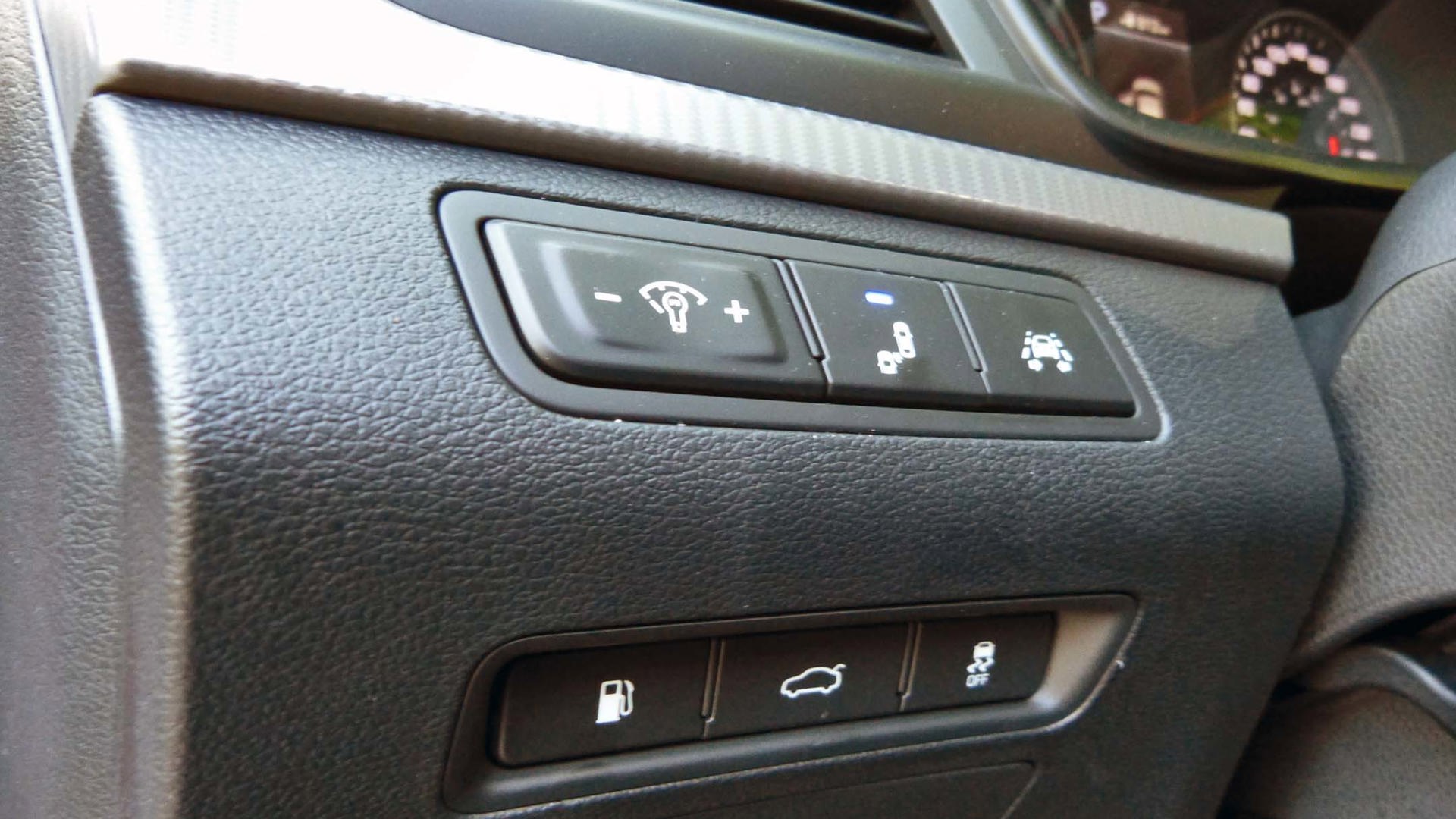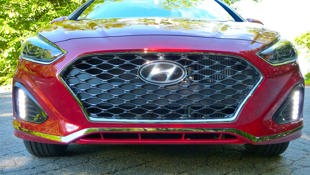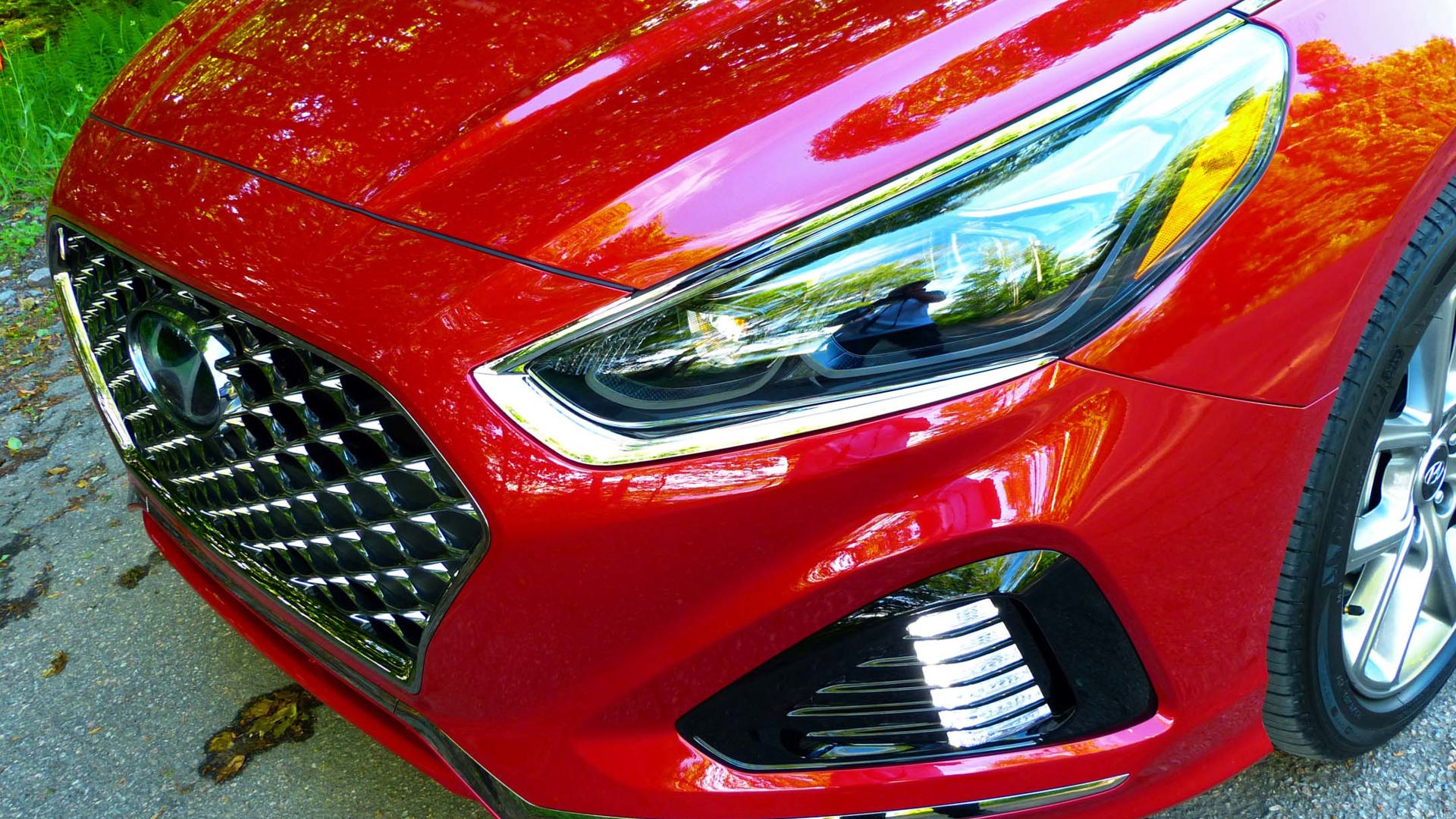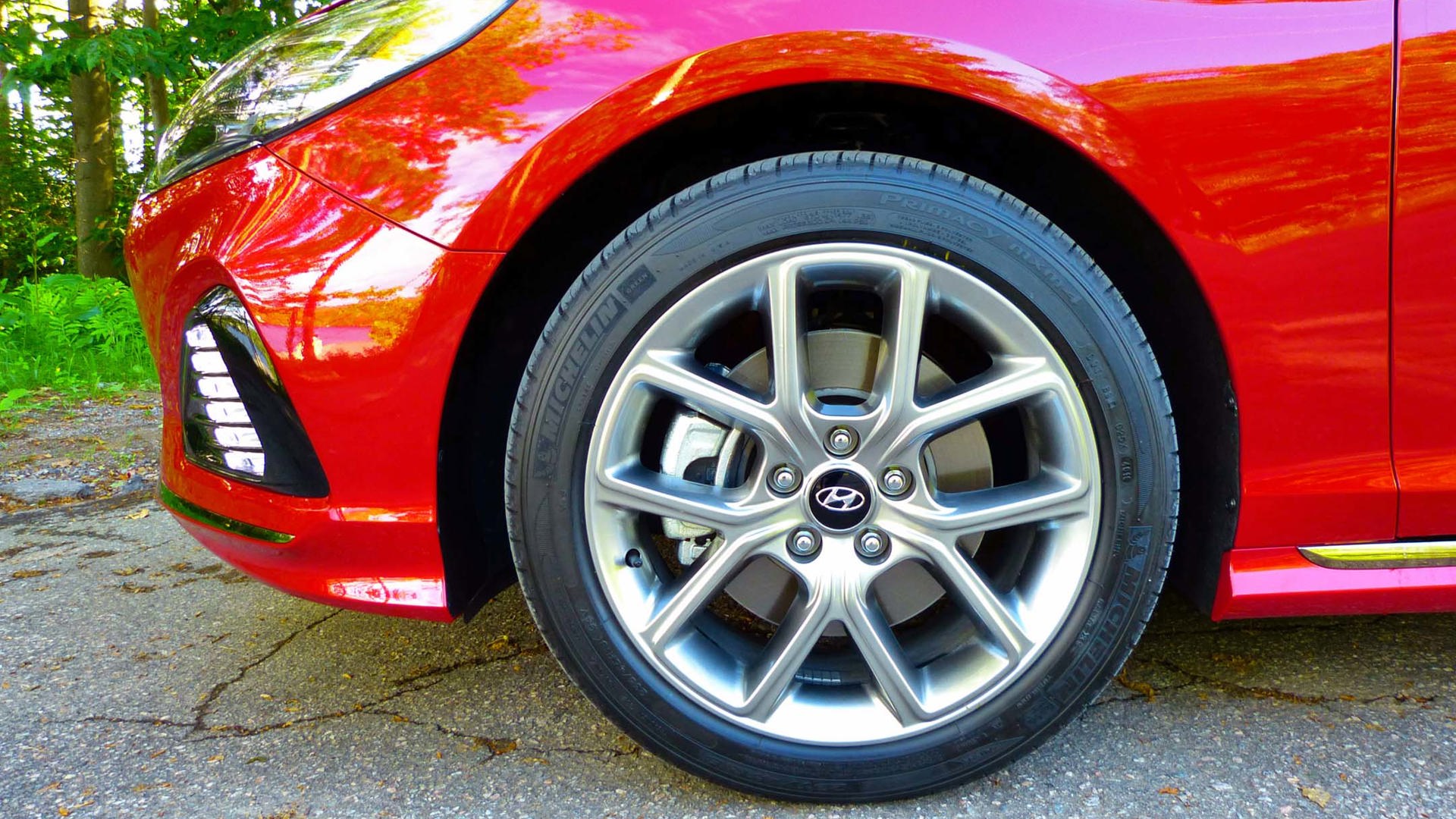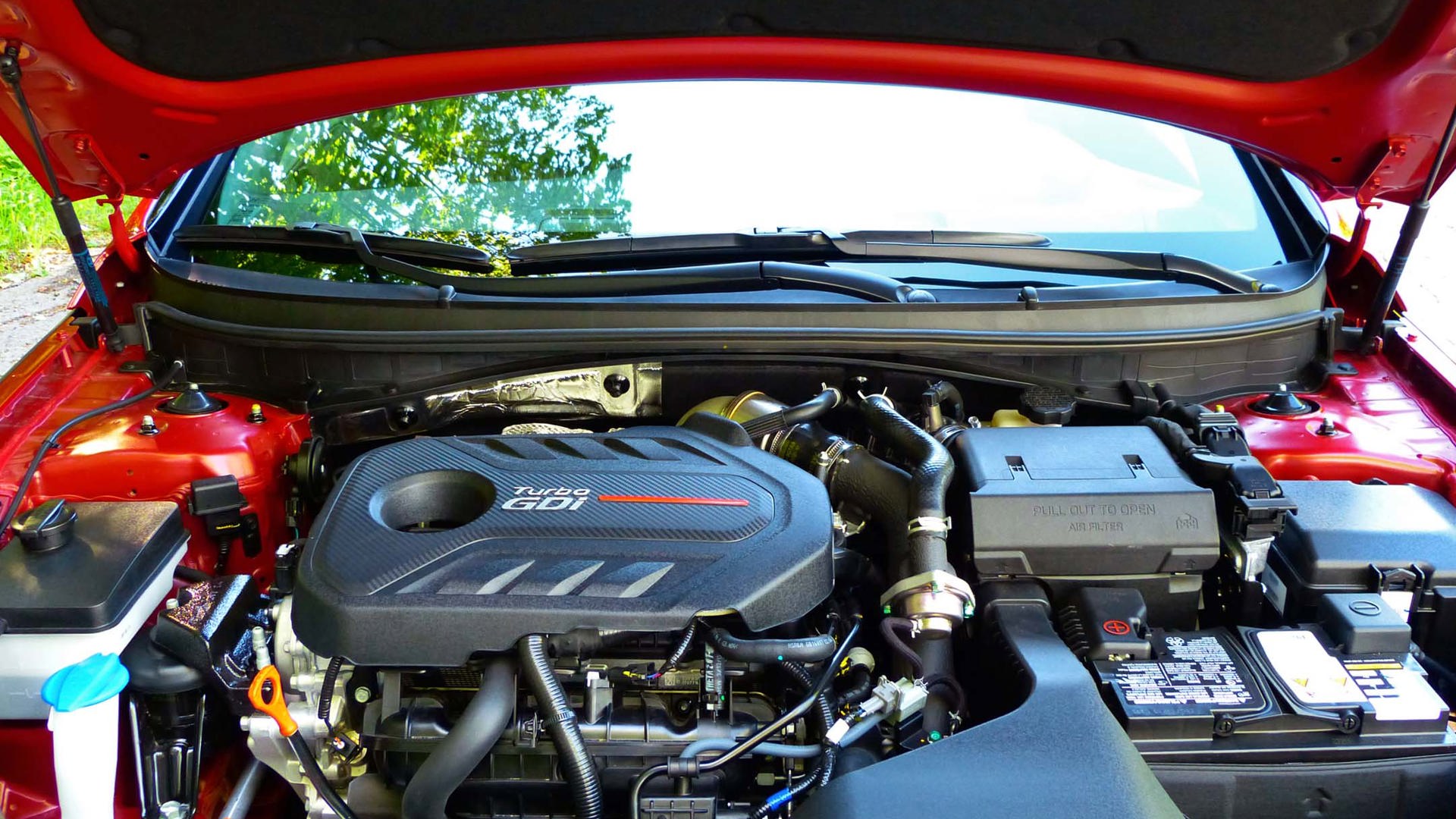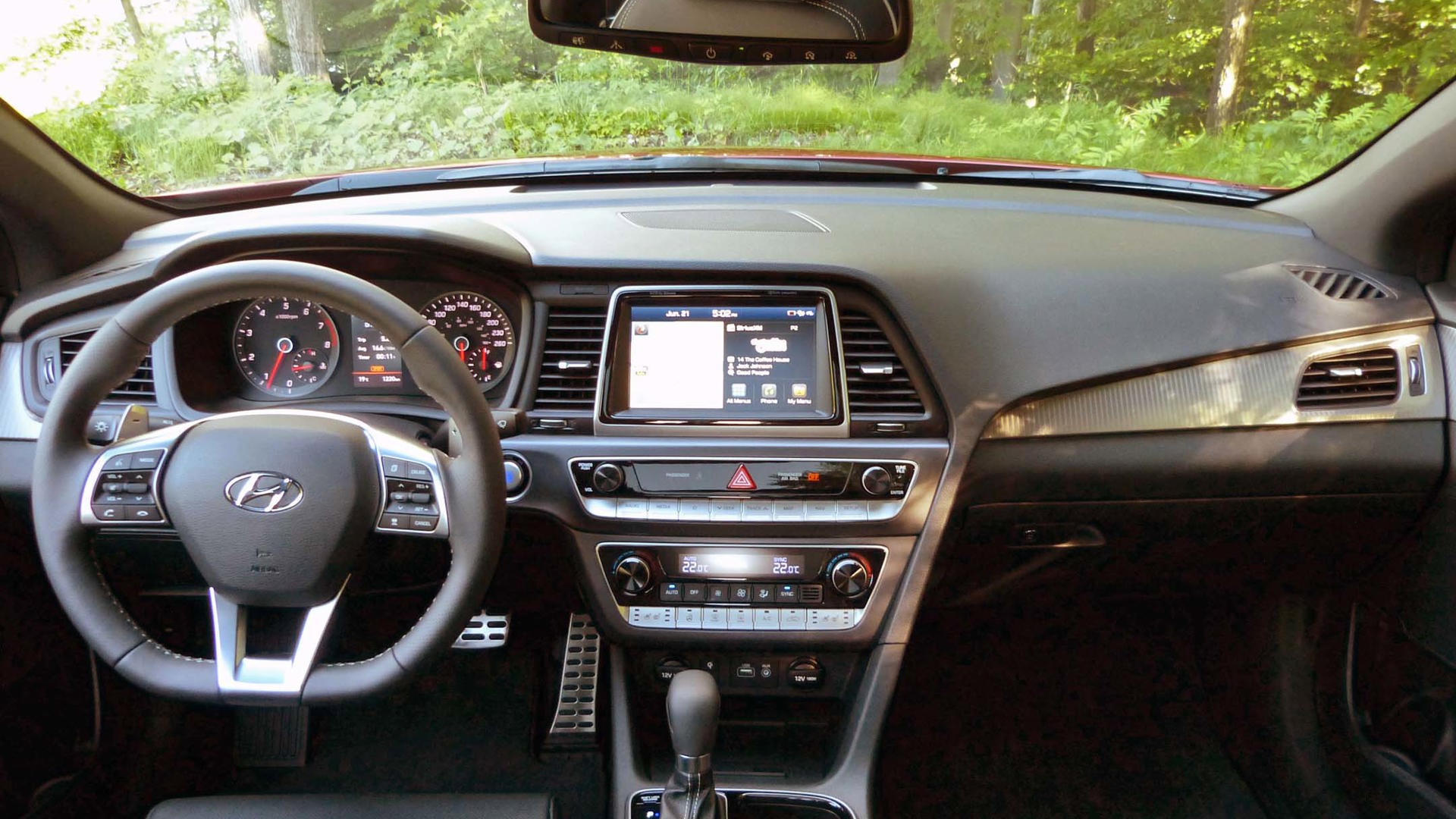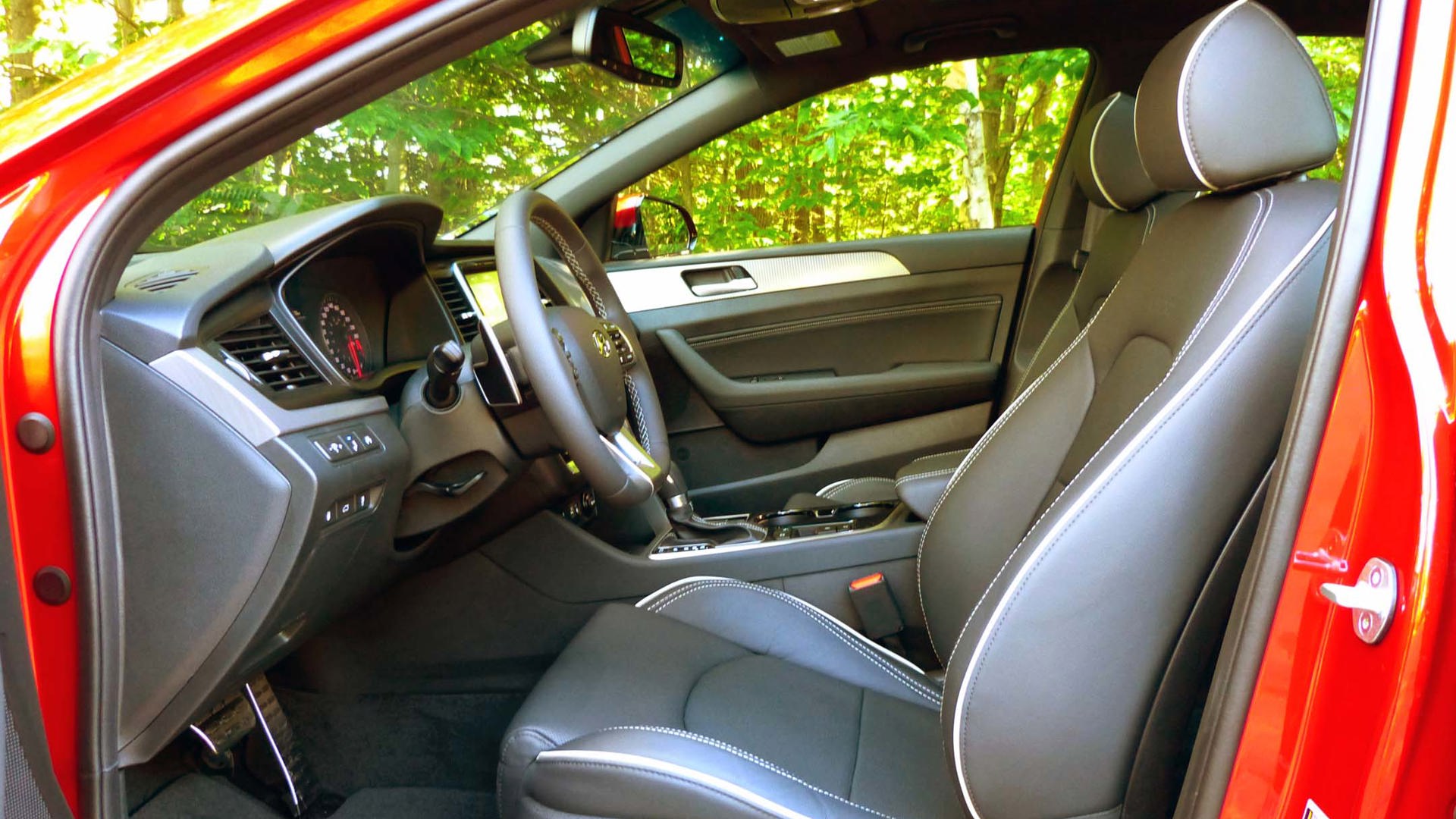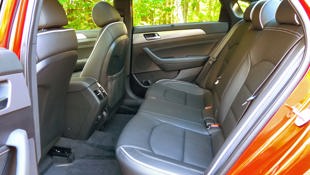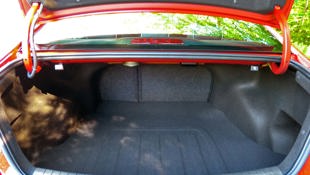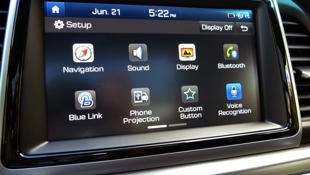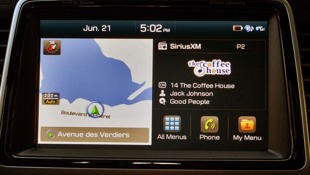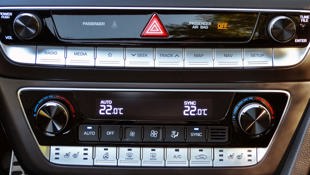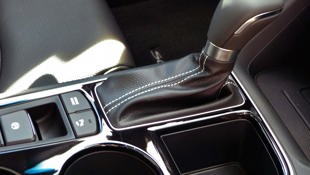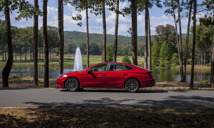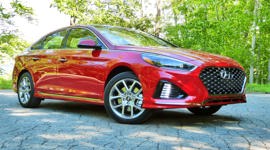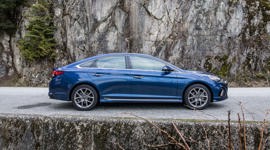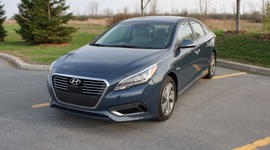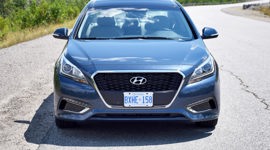Hyundai has taken the “soft” mallet to the front end of their mid-size sedan, taking the striking and imposing square-cut lines and rounding them all off to create a far more conservative, gentle figure in the 2018 Hyundai Sonata. I personally believe that subtlety is for awkward teenagers, and this is a step too far in the “gentle direction”; but I suspect strongly that my personal aesthetic tastes and those of the general buying public differ. This is a decision designed to impress the 95,000-odd people who actually shop this market, of whom more than 10,000 bought Sonatas in 2016. That put it fifth in sales behind the Toyota Camry, Ford Fusion, Honda Accord and Chevrolet Malibu.
The Sonata pushes on the line between mid-size and large sedan
Both the 185 hp/178 lb-ft 2.4L inline-four and the 245 hp/260 lb-ft 2.0L turbo four engines are carry-over units, but the 2.0L gets a new eight-speed transmission.
It was this latter drivetrain that we were able to sample when Hyundai made the 2018 Sonata available briefly during the launch event for the 2018 Hyundai Elantra GT and GT Sport.
There will also be hybrid and plug-in hybrid versions available, and in a mid-size sedan, I strongly advocate those options.
If you do opt for the 2.0T however, you will be rewarded with a strong, willing engine that delivers top-notch performance and will not leave you wanting. The new eight-speed transmission is smooth, and will downshift readily when called upon, with a moderate pace of gear change. That is, the gearbox will shift gears like a gentle family sedan should, and not like a sports car would. This is a positive thing.
That engine is smooth, and composed, with little noise and even less harshness. Prod it and you’ll know you’re working it hard, but drive on the slightly lead-footed side (as I do) and you’ll just be pleased. Open the bonnet and you’ll notice a distinctively formed cold-air intake. That will allow you to show off the car’s performance chops to your friends. Or give you something to chuckle about. Either way it’s a win.
Fuel economy for the 2.0T is not available yet, but the 2017 model was rated at 10.5/7.6/9.2 l/100 km city/highway/combined. You can expect a mild improvement from the eight-speed transmission, but nothing earth-shattering.
There are drive modes, which come with a colour change on the instrument display. Eco, Normal, and Sport are all dramatically different in terms of engine and transmission response. There is a change in the steering weight too, but Sport adds more heft than accuracy. Still, Hyundai is on a roll developing cars that handle well and provide good steering response. The Sonata is on the shortlist for those who enjoy driving, right up near the Mazda6 – though the Sonata is significantly more powerful in 2.0T trim.
That said, the Sonata is a sort of value-prop grand tourer more than a sporty family sedan, again a direction I think most of the target market will eagerly support. Buyers will also appreciate the spacious interior, and huge 462 L trunk. Just one way in which the Sonata pushes on the line between mid-size and large sedan. It gets away with that border-nudging though, mostly because large sedans are not super-sized. Cars are big, yo.
That trunk opens by way of a press on the top part of the “H” logo on the bootlid. No visible button exists, but if your key is with you and you hold your finger on that magic area – Voila! Trunk opens.
Other enhancements for 2018 include the interior design and switch gear. A seven-inch touchscreen with Android Auto/Apple CarPlay connectivity is standard; the eight-inch I experienced is the upgrade. This Hyundai system is very, very strong, and includes some spectacular features. My favourite? The ability for the car to automatically record your six favourite channels. Switch to “90s on 9” just in time to catch the end of “Regulate”? No problem, rewind to the beginning with a single button press. Mount up!
Like the 2018 Hyundai Elantra GT, the Sonata will get Blue Link. Blue Link is Hyundai’s answer to OnStar – and it’s a compelling proposition. It’s free for five years, with full service, which means it will run for the duration of most lease periods and finance periods. After that, there will be an as-yet-undetermined subscription fee. Blue Link offers remote starting, remote control of the air conditioning and heating systems and a vehicle locator, as well as vehicle diagnostics. It operates via an in-car modem that is synced to your smartphone.
Adding driver-attention alert gives the Sonata what Hyundai calls the “segment-leading” suite of safety features. In top trims at least that’s a fair call.
The switch gear is really nice, both aesthetically and in feel, with metallic-look buttons and toggles that give a satisfying tactile feedback. It’s very clear that the Genesis interior is trickling down. Genesis is of course a “brand” born out of Hyundai.
The seats are still the same, wide, comfortable seats they always were, and the Sonata remains the moderately well insulated tourer it has always been. You will get suspension noise, and in fact more than I expected, so I think Hyundai spent most of its time and attention on reducing wind and engine noise. Tire noise is minimal.
Pricing is yet to be announced, but I find Hyundai models are great value early in the range, drop out of contention in the middle, and lead the charge at the top. A second-from-bottom 2.4 Sport trim is my pick for best value, with the 2.0T filling your boots if you’re determined to get the maximum bells and whistles for your money. It’s worth scanning the full trim walk once it’s released to find your own sweet spot.
In the race for dwindling mid-size sedan market share, the Sonata is a deserving top-five contender. With some minor tweaks to its aesthetics and fuel economy, plus a tune-up for noise, vibration, and harshness, you can expect it to push further into the top three.

